

Thank you for joining us today for the May 21, 2024, International Myeloma Foundation’s Virtual Regional Community Workshop



Thank you for joining us today for the May 21, 2024, International Myeloma Foundation’s Virtual Regional Community Workshop
At the close of the meeting a feedback survey will pop up.
This will also be emailed to you shortly after the workshop.

Please take a moment to complete this survey.


Thank you to our sponsors!









May 21, 2024
Multiple Myeloma affects patients and families.
The IMF provides FREE resources to help both patients and families.
Established in 1990, the IMF’s InfoLine assists over 4600 callers annually and answers questions across a wide variety of topics including:

Frequent topics:
• Treatment questions along the spectrum of care
• Clinical Trial access and understanding
• Side effect management and health issues
• Financial resources for myeloma-related expenses
• Myeloma Specialist Referral contact information
• Support group information
• Caregiver Support
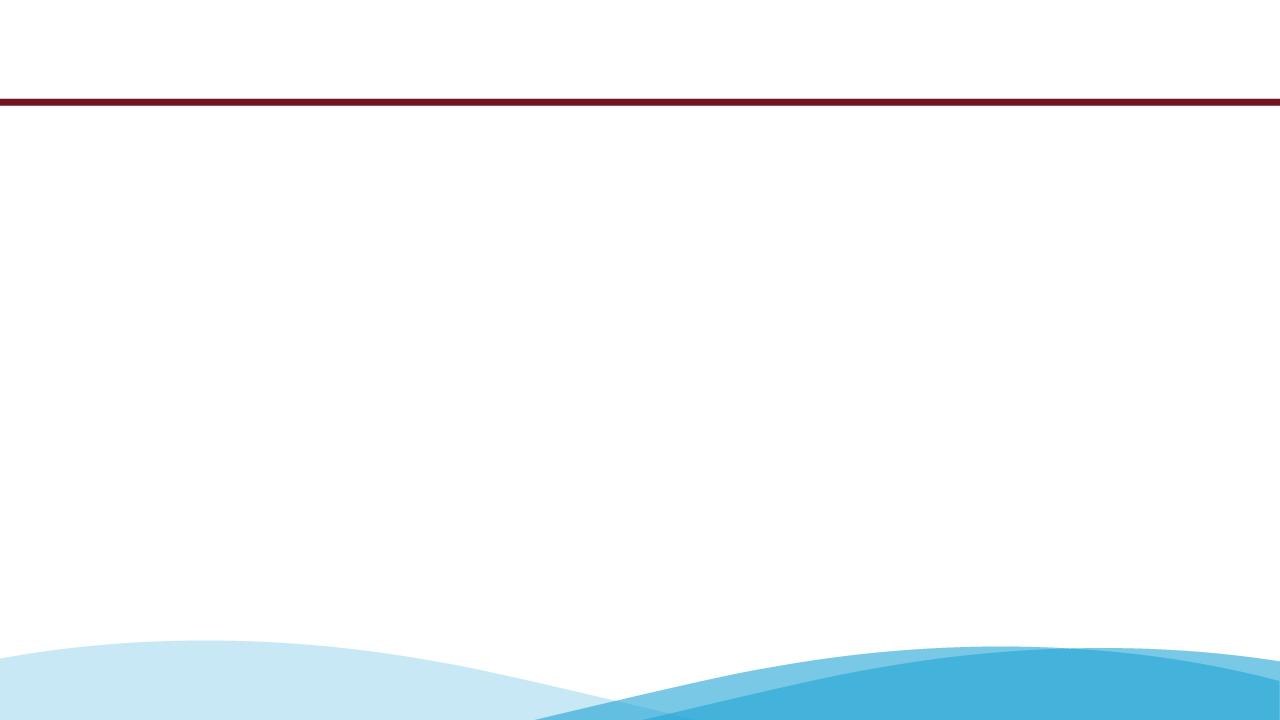




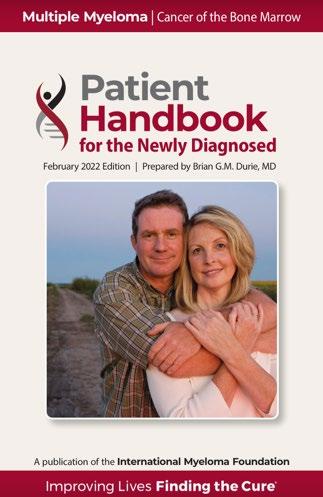

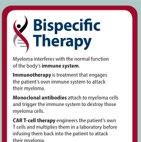

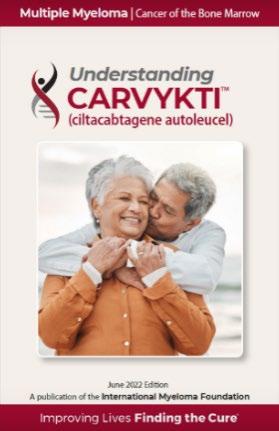



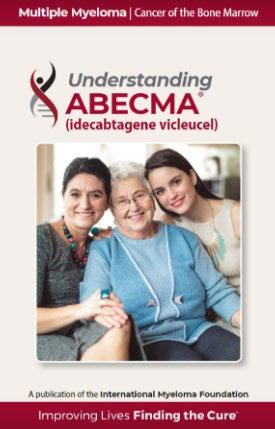
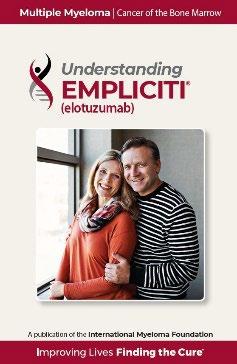
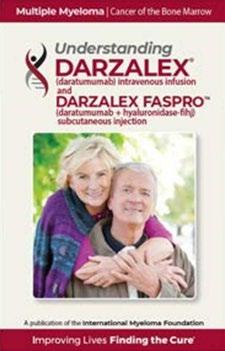

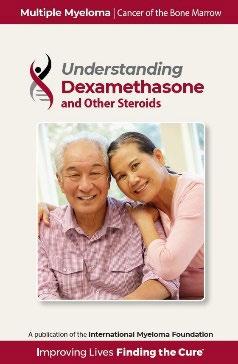


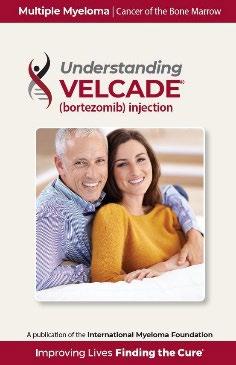



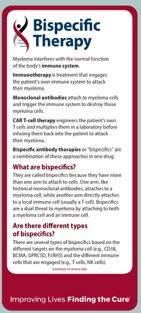








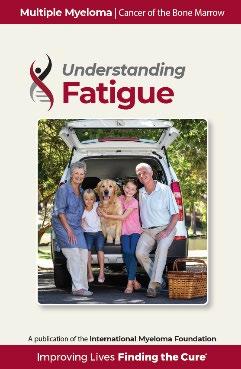
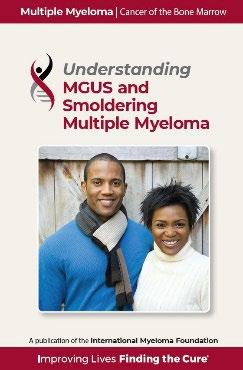

A core mission of the IMF is to provide thorough and cutting- edge education to the myeloma community. Link to Pubs






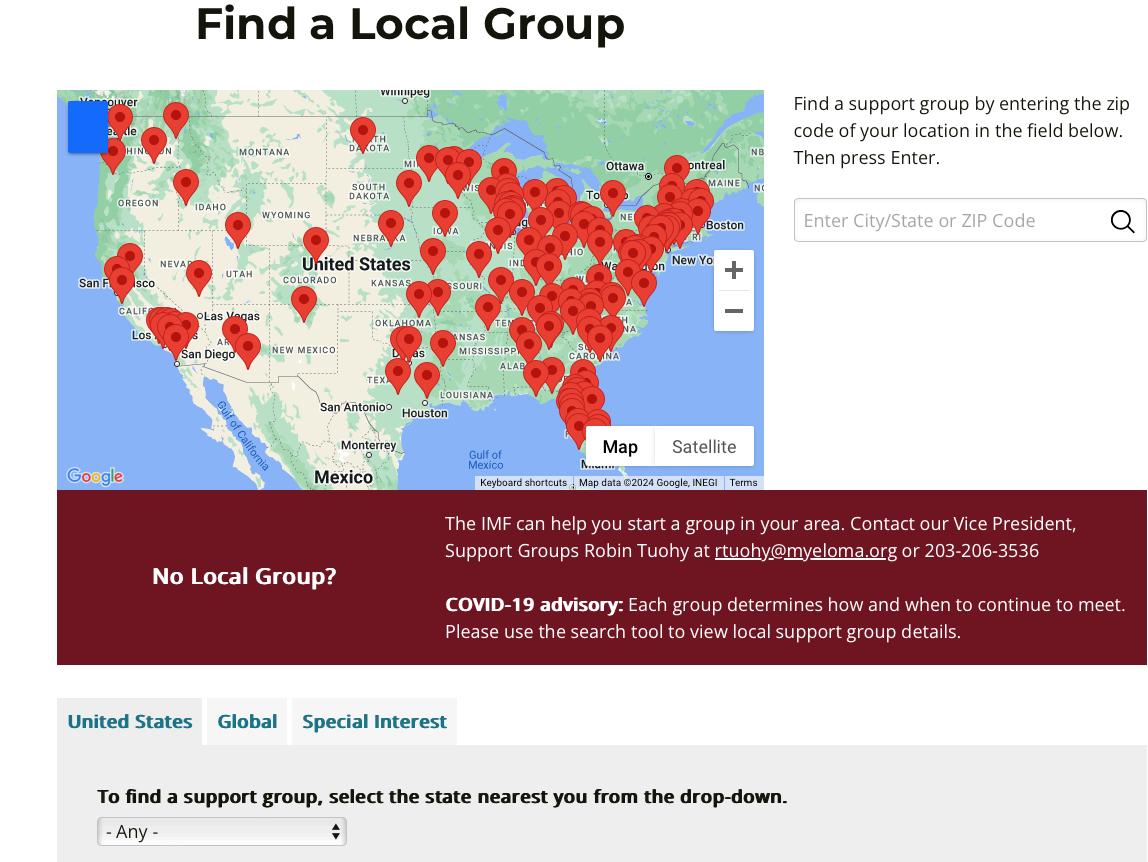
 Link to
Link to

Special interest groups are designed as a supplemental support for specific populations of patients, in addition to their local Support Groups
Las Voces de Mieloma
Designed for Spanish speaking patients only

Living Solo & Strong with Myeloma
Designed for patients without a care partner

New in June!
Care Partners Only

Designed to address the needs of care partners only
High Risk Multiple Myeloma
Designed to address the needs of the high-risk MM population
Smolder Bolder
Created for people living with Smoldering Multiple Myeloma
MM Families
For patients/care partners with young children


• Review the basics of blood and cancer
• Define multiple myeloma and its key features
• Discuss the staging and classification of myeloma
• Outline the approach to therapy of myeloma
• Appreciate the importance of health disparities in myeloma
• The blood is an “organ” made up of both cells and liquid “plasma” • Think of wine (red/white/rose)
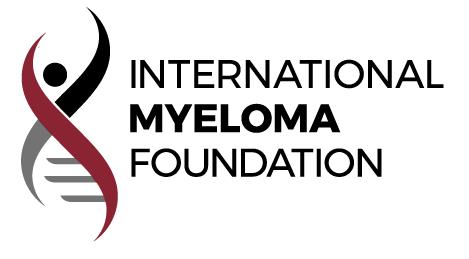
Multiple Myeloma* is a blood cancer that starts in plasma cells from the center of bones (bone marrow).
– This is where stem cells mature into red blood cells, white blood cells, and platelets
– Myeloma cells are abnormal plasma cells that make an abnormal antibody called “M protein” – M = monoclonal (“identical” or cancerous)
* Myeloma is NOT a bone cancer or skin cancer (melanoma), it is a type of blood cancer.


• Cancer of plasma cells
• Healthy plasma cells produce immunoglobulins G, A, M, D, and E
• Myeloma cells produce abnormal immunoglobulin “paraprotein” or monoclonal protein (=M protein)

Bone marrow of patient with multiple myeloma
Image courtesy of American Society of Hematology
Kyle et al. Mayo Clin Proc. 2003;78:21-33;

1.8% of all cancers; 17% of hematologic malignancies in the United States


Most frequently diagnosed in ages 65 to 74 years (median, 69 years)

The average age of diagnosis of 4-5 years younger in African American and Hispanic patients
National MM Statistics
Approx 35,000 Estimated
New Cases in 2023 Approx 13,000 Estimated Deaths in 2023
The Average Survival of patients with myeloma is IMPROVING!

The expected survival is nearly 10 years for all patients, but still less than 5 years in patients with high risk disease
Trends in MM Natural History by Race
Incidence
Higher incidence in AA vs White patients:
15.9 vs 7.5 cases per 100,000 per year
Mortality
5.6 vs 2.4 MM deaths per 100,000
5-year relative survival evolution from 1973 to 2005 • Survival for White patients increased significantly from 26.3% to 35% • Survival for AA patients increased from 31% to 34.1%

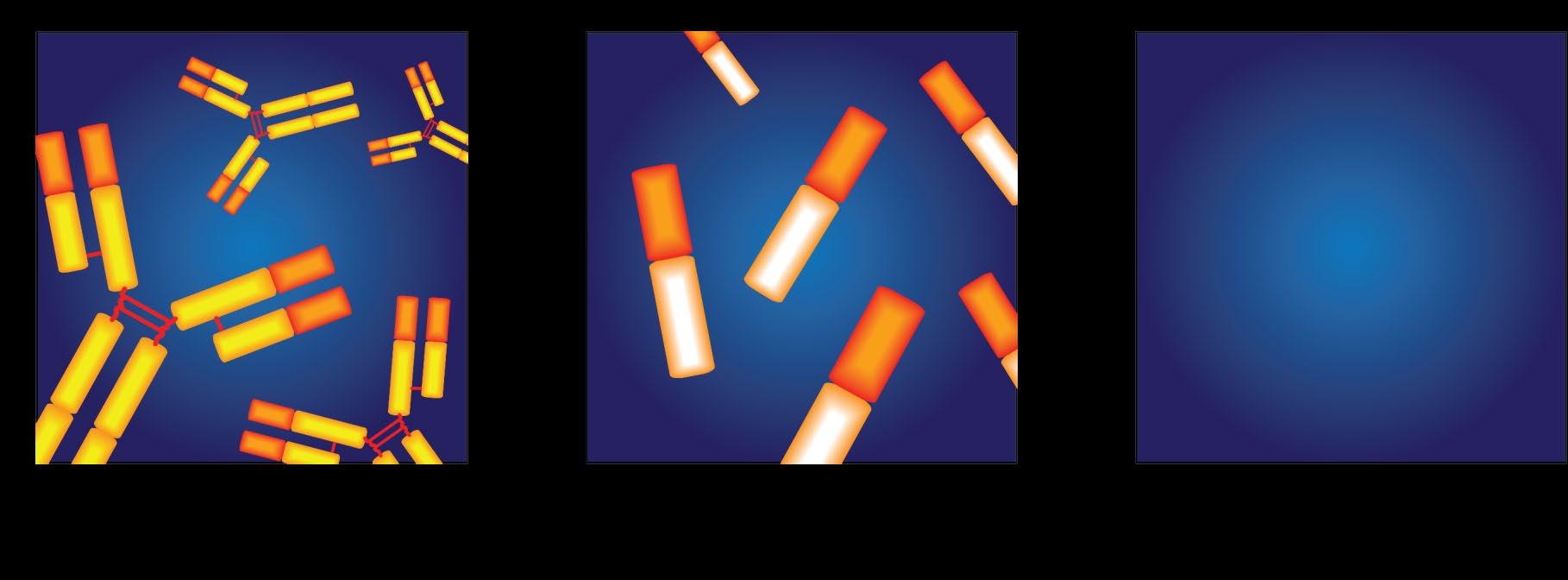
• For example:
• IgG+kappa
• IgG+lambda
• IgA+kappa
• IgA+lambda
• etc…
• 80% of myeloma cases
Bence Jones protein
• 18% of all myeloma cases
• Renal failure more common in light chain multiple myeloma; creatinine >2 mg/dL in 1/3 of cases
protein present
• Less than 3% of cases of multiple myeloma
• Subtypes of MM are determined based on the kind of abnormal protein IgG – 55%
IgA – 25%
IgD – 1-2%
IgM – 1% Light Chain Disease only – 20%
Non Secretors 1-2 %

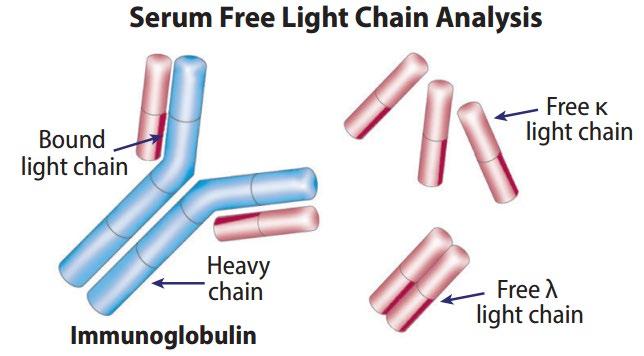

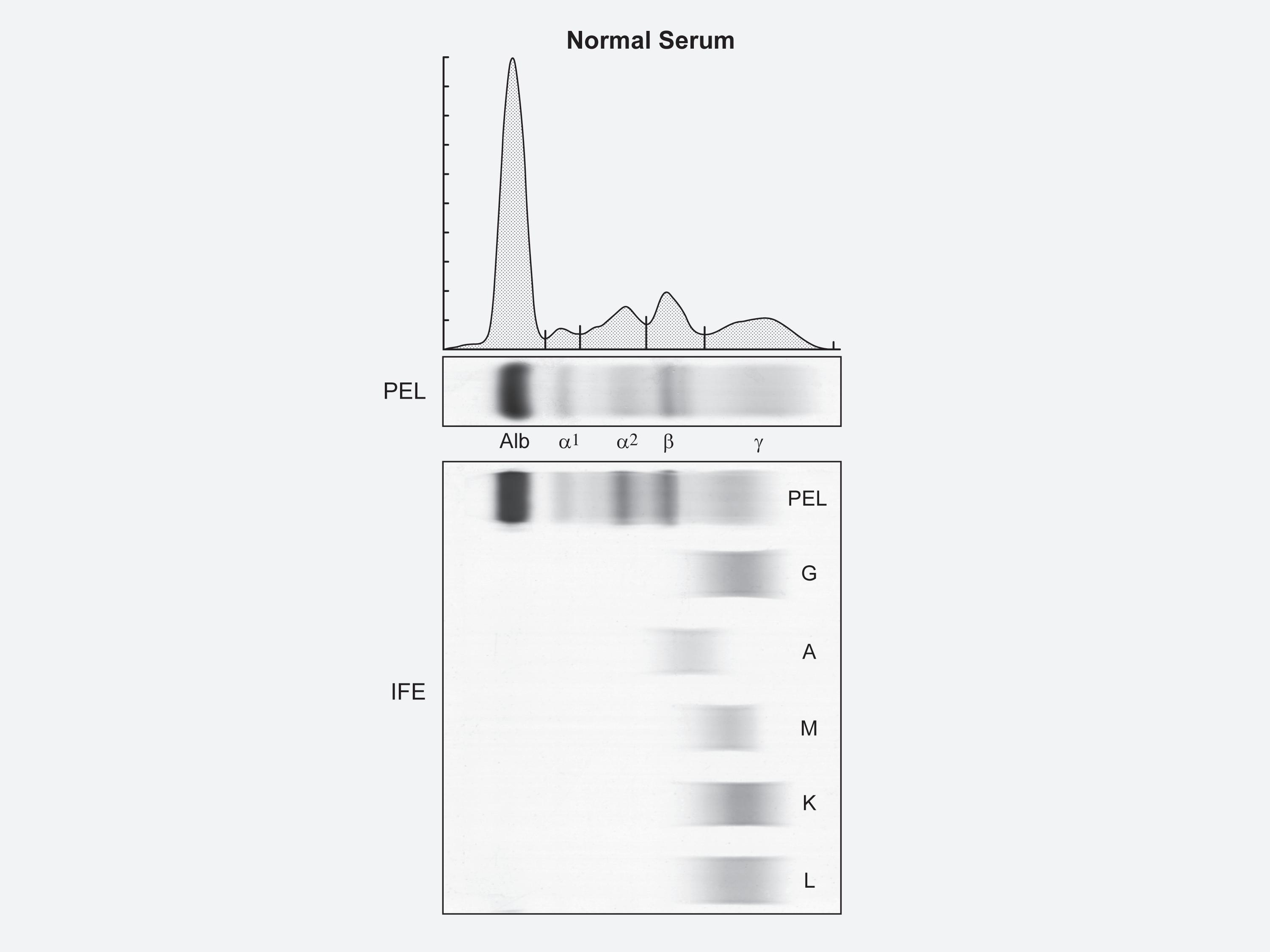
 M spike in gamma region
M spike in gamma region
- both “heavy” and ”light” chains
Condition
Clonal plasma cells in bone marrow
Presence of Myeloma
Defining Events
MGUS1-4 (Monoclonal Gammopathy of Undetermined Significance)
SMM1-5,8 (Smoldering Multiple Myeloma) Active Multiple Myeloma6-8
Likelihood of progression ~1% per year ~10% per year Not Applicable
Premalignant Malignant * In clinical trial (preferred) or offer treatment for those likely to progress within 2 years
1. Kyle RA, et al. N Engl J Med. 2007;356:2582-90.
2. International Myeloma Working Group. Br J Haematol. 2003;121:749-57.
3. Jagannath S, et al. Clin Lymphoma Myeloma Leuk. 2010;10(1):28-43
4. Kyle RA, et al. Curr Hematol Malig Rep. 2010;5(2):6269.
5. Mateos M-V, et al. Blood. 2009;114:Abstract 614.
6. Durie BG, Salmon SE. Cancer. 1975;36:842-854.
7. Durie BG, et al. Leukemia. 2006;20(9):1467-1473.
8. Rajkumar SV, et al. Lancet Oncology 2014; 15:e538e548.




Kyle RA. Mayo Clin Proc. 2003;78:21-33.

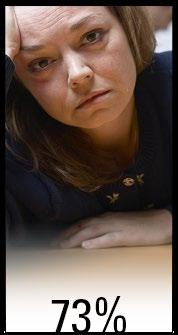
Clonal bone marrow ≥10% or bony/extramedullary plasmacytoma AND any one or more Myeloma-Defining Events
alcium elevation enal complications nemia one disease

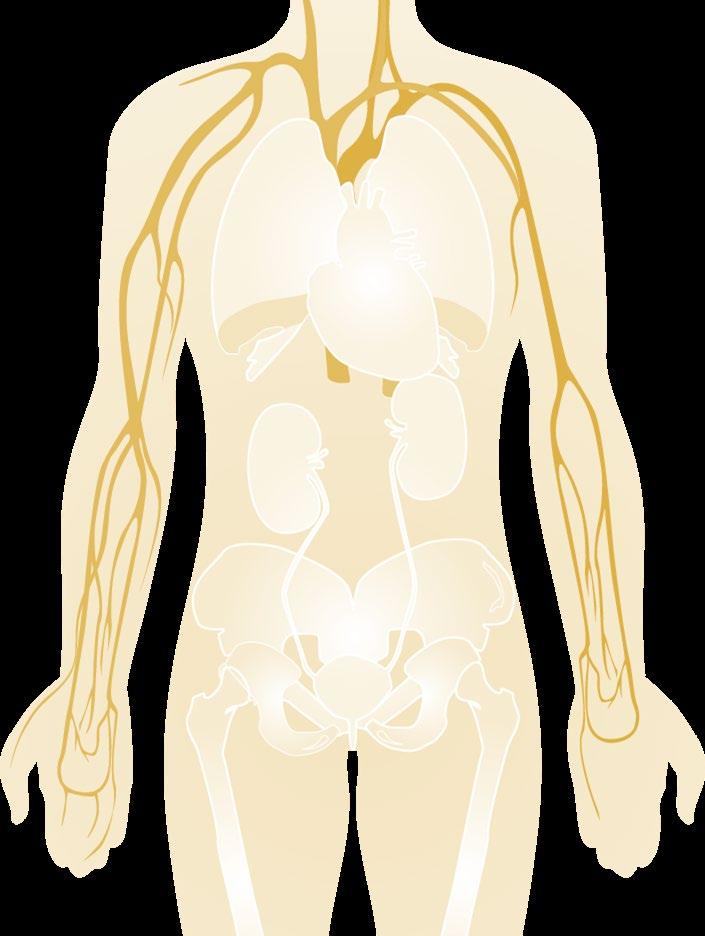



Low Blood Counts
• May lead to anemia and infection
• Anemia is present in 60% at diagnosis
Decreased Kidney Function
• Occurs in over half of myeloma patients
Bone Damage
• Affects 85% of patients
• Leads to fractures
Bone Turnover
• Leads to high levels of calcium in blood (hypercalcemia)
Weakness Fatigue
Infection
Bone pain
Loss of Appetite & Weight loss
About 10% to 20% of patients with newly diagnosed myeloma will not have any symptoms.


CBC Counts the number of red blood cells, white blood cells, and platelets

CoMP

Measures levels of albumin, calcium, and creatinine to assess kidney and liver functions, bone status ,and the extent of disease




MicroG Determines the level of a protein linked to MM and kidney function: USED FOR STAGE Immuno
LDH Lactate Dehydrogenase Determines the level of myeloma cell production and extent of MM : USED FOR STAGE











Serum Protein EP Detects the presence & level of M protein = how much myeloma. No Heavy Chain = No M-Spike Serum Free Light Chain Measures myeloma free light chains (kappa or lambda) in blood = how much myeloma Urine Protein EP Detects Bence-Jones proteins (otherwise known as myeloma light chains) in urine (to determine if it’s present or not present)
Identifies the type of abnormal antibody proteins: IgG, IgA, IgM









Test Name
CBC + differential
Complete metabolic panel
Beta-2 Microglobulin (B2M)
Lactate Dehydrogenase (LDH)
Serum Immunofixation and Protein electrophoresis (SPEP+IFE)
Immunoglobulins (G, A, M, D, E)
Free light chain assay with kappa/lambda ratio
Urine immunofixation & protein electrophoresis (UPEP+IFE)
What it means

Hemoglobin, WBC, Platelets
Creatinine, Calcium, Albumin,
Liver function
Part of staging and risk stratification
Measures the level of normal and clonal protein
Identifies the type of clonal protein

Measures the level of normal and clonal protein
Identifies the type of clonal protein
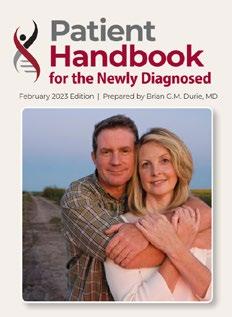
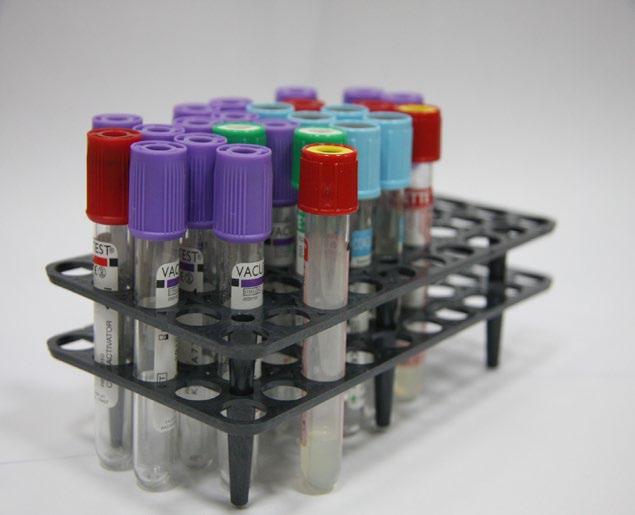

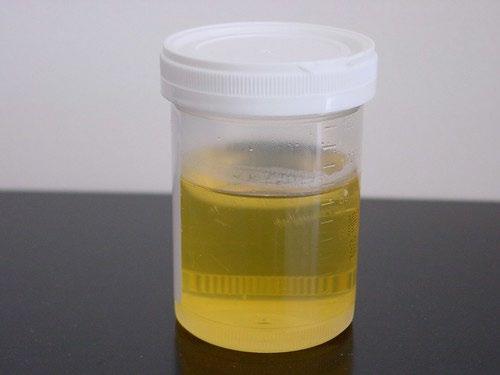

Imaging:
– Skeletal survey: Series of X-rays; less sensitive than other techniques

Healthy bone versus myeloma bone disease


– Whole body low dose (CTWB-LD CT )
– Positron Emission Tomography (PET/CT)
– Magnetic Resonance Imaging (MRI)





Bone marrow biopsy & aspirate
• Bone marrow plasma cells (%)
• Congo Red staining if concern for AL-Amyloid
• Cytogenetics
• Fluorescence in situ hybridization (FISH)
• Next generation sequencing (NGS)
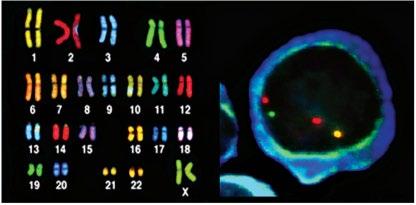




High Risk FISH Results

Fluorescence in situ hybridization (FISH) and Chromosomal abnormalities



Treatment Planning is the process of thinking about the treatment steps you can take with your doctor, based on your goals and preferences.
Treatment decisions are based on:
• The results of biomarker tests, cytogenetic (FISH) test, and the stage of multiple myeloma
• Your values, goals, and preferences
• Your age
• Your health and symptoms (if you have kidney disease, heart disease, anemia, or other issues)
• Your medical history and past treatments for multiple myeloma
Transplant
Eligible Patients
Transplant (ASCT) Maintenance
Initial Therapy
Transplant
Ineligible Patients Consolidation / Maintenance Continued therapy
Treatment of Relapsed disease

TREATMENT DECISION
Your Preference
Everyone


• You have the right to get a second opinion. Insurance providers may require second opinions.
• A second opinion can help you:
– Confirm your diagnosis
– Give you more information about options
– Talk to other experts
– Introduce you to clinical trials

– Help you learn which health care team you’d like to work with, and which facility
Class Drug Name

IMiD
immunomodulatory drug
Abbreviation Administration
Pomalyst (pomalidomide) P or Pom
Revlimid (lenalidomide) R or Rev
Thalomid (thalidomide) T or Thal
V or Vel or B
Velcade (bortezomib)
Proteasome inhibitor
Chemotherapy
Steroids
Monoclonal Antibodies
Kyprolis (carfilzomib) C or K or Car
Ninlaro (ixazomib) N or I
Intravenous (IV) or subcutaneous injectionSC (under the skin)
Cytoxan (cyclophosphamide) C Oral or intravenous
Alkeran or Evomela (melphalan) M or Mel
Decadron (dexamethasone) Dex or D or d
Prednisone P or Pred
Darzalex (daratumumab)
Sarclisa (isatuximab)
Empliciti (elotuzumab) Dara Isa Elo
XPO1 Inhibitors Xpovio (selinexor)
Oral or intravenous
Intravenous (IV or SC)

Class Drug Name
Abbreviation Administration
Peptide Drug Conjugate* Pepaxto (Melphalan Flufenamide) Melflufen Intravenous
BCMA Targeted Antibody Drug
Conjugate (ADC)*
Blenrep (belantamab mafodotin) Bela, Belamaf, or B Intravenous
CAR T Cell therapy
Bispecific Antibodies
Abecma (idecabtagene vicleucel)
Carvycti (ciltacabtagene vicleucelel) Cilta-cel
Tecvayli (teclistimab)
Talvey (Talquetamab)
Ide-cel Intravenous (IV) or subcutaneous injectionSC (under the skin)
Elrexfio (Elranatamab) Tec Talq Elra SC or IV
* these agents are currently off the market but available through special programs
Antibody-dependent Cellular cytotoxicity (ADCC) ADCC
Effector cells:
Complement-dependent Cytotoxicity (CDC)
Apoptosis/growth arrest via targeting signaling pathways
• Lucatumumab or Dacetuzumab (CD40)
• Elotuzumab (CS1; SLAMF7)
• Daratumumab, SAR650984/Isatuximab (CD38)
• XmAb 5592 (HM1.24)
• Daratumumab
• SAR650984/Isatuximab (CD38)
• huN901-DM1 (CD56)
• nBT062-maytansinoid (CD138)
• Siltuximab (1339) (IL-6)
• BHQ880 (DKK1)
• RAP-011 (activin A)
• Daratumumab, SAR650984/Isatuximab (CD38)

Effector cell

Hucks G, Rheingold SR. Blood Cancer J. 2019;doi:10.1038/s41408-018-0164-6.
Manufacture of CAR T CellsMechanism
• Incorporates 2 antibody fragments to target and bind both tumor cells and T cells
• Brings target-expressing MM cells and T cells into close proximity, enabling T cells to induce tumor-cell death

Bispecific Molecule Targets Vary
“Off the Shelf”
Advantage
• No manufacturing process, unlike CAR T-cell therapy (but like ADC/belantamab therapy)
• Thus, no delay between decision to treat and administration of drug
ADC = Antibody-Drug Conjugate; BCMA = B-Cell Maturation Antigen; CD3 = Cluster of Differentiation 3; FcRH5 = Fc receptor-homolog 5; GPRC5D = G-protein
Bi-Specific Antibodies
Talquetamab
CAR-T






Antibody Drug Elotuzumab

Bi-Specific Antibodies




Bi-Specific Antibodies
CAR-T


Antibody Drug


Daratumumab and Darzalex Faspro Isatuximab

TAK-079 MOR202



Immune Therapies Ide cel CAR T









Teclistamab

Cilta cel CAR T


Other Bi-Specific Antibodies
Other CAR-Ts
Bortezomib
Lenalidomide
Carfilzomib
Pomalidomide
Panobinostat
Daratumumab
Ixazomib
Elotuzumab
Lenalidomide
Bortezomib
Ixazomib
Lenalidomide + PI
SCT +/- More induction
Carfilzomib
Combinations
Selinexor
Isatuximab
Idecabtagene autoleucel
Ciltacabtagene autoleucel
Teclistamab
Talquetamab
Elranatamab
CAR T or Bispecifics?
Daratumumab?
Novel CAR T Cell Therapies
Bispecific/Trispecific Antibodies
CelMod Agents
Venetoclax?
Modakafusp
Multiple small molecules

The core vision of this initiative is to improve the short- and longterm outcomes of African American patients with myeloma. We want to empower patients and communities to change the course of myeloma…

provide




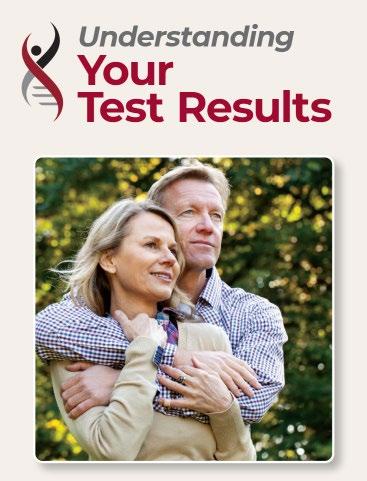


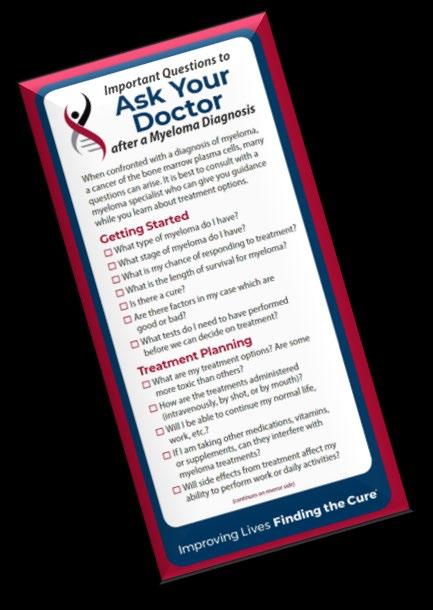


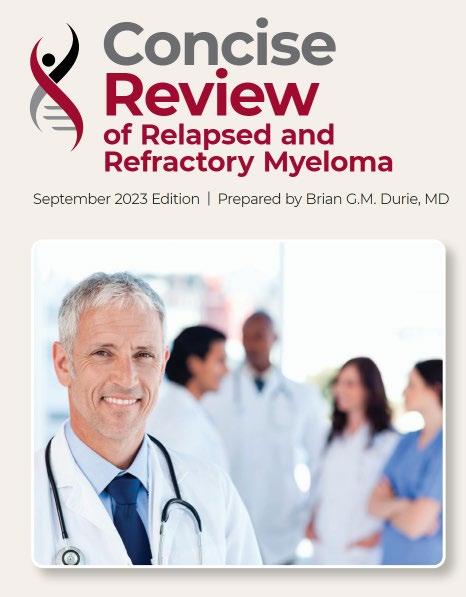
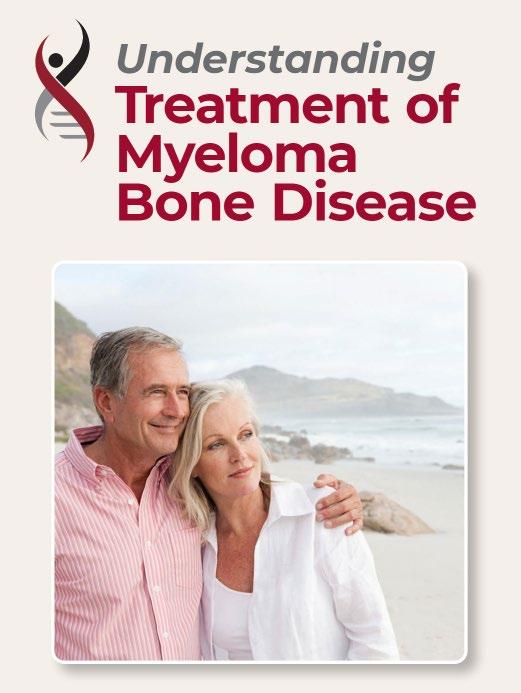
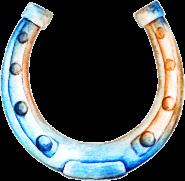
Dana-Farber
Cancer InstituteBoston, MA




Myeloma and treatment options, side effects, symptom management, & supportive care FINDING YOUR

STABLE OF TREATMENT
FINDING YOUR GAIT GOING THE DISTANCE




• Rapid and effective disease control
• Durable disease control
• Improved overall survival
• Minimize side effects
• Promote good quality of life

FINDING YOUR GAIT
GOING THE DISTANCE
• Prevent disease- and treatmentrelated side effects
• Optimize symptom management
• Promote quality of life
Discuss your goals and priorities with your healthcare team.


STABLE
FINDING YOUR GAIT
GOING THE DISTANCE
Steroids enhance the effectiveness of other myeloma therapies
Do not stop or alter your dose of steroids without discussing it with your provider
Managing Steroid Side Effects
• Consistent schedule (AM vs. PM)
• Take with food
• Stomach discomfort: Over-the-counter or prescription medications
• Medications to prevent shingles, thrush, or other infections
Steroid Side Effects
• Irritability, mood swings, depression
• Difficulty sleeping (insomnia), fatigue
• Blurred vision, cataracts
• Flushing/sweating
• Increased risk of infections, heart disease
• Muscle weakness, cramping
• Increased blood pressure, water retention
• Stomach bloating, hiccups, heartburn, ulcers, or gas
• Weight gain, hair thinning/loss, skin rashes
• Increased blood sugar levels, diabetes

Infection remains the leading cause of death in patients with multiple myeloma. Several factors account for this infection risk, including the overall state of immunosuppression from multiple myeloma, treatment, age, and comorbidities (e.g., renal failure and frailty).
IMWG Consensus guidelines and recommendations for infection prevention in multiple myeloma; Lancet Haematol.2022;9(2):143–161.
Good personal hygiene (skin, oral)
Environmental control (avoid crowds and sick people; use a high-quality mask when close contact is unavoidable)

STABLE
FINDING YOUR GAIT
GOING THE DISTANCE
Report fever of more than 100.4°F, shaking chills even without fever, dizziness, shortness of breath, low blood pressure to HCP as directed.
As recommended by your healthcare team:
Immunizations:
Flu, COVID, RSV & and pneumococcal vaccinations; avoid live vaccines
Preventative and/or supportive medications (next slide)


STABLE
FINDING YOUR GAIT
GOING THE DISTANCE
Type of Infection Risk
Herpes virus reactivation (HSV/VZV); CMV reactivation Acyclovir prophylaxis
Bacteremia, pneumonia, and urinary tract infection
Consider prophylaxis with levofloxacin PJP (P jirovecii pneumonia)
Consider prophylaxis with
Fungal infections (aspergillus)
Consider prophylaxis with fluconazole
Some people receiving BCMA-targeting therapies have experienced infections that are less common like

Diarrhea may be caused by medications and supplements
– Laxatives, antacids with magnesium
– Antibiotics, antidepressants, other (check with provider, pharmacist)
– Supplements: milk thistle, aloe, cayenne, saw palmetto, ginseng
Avoid caffeinated, carbonated, or heavily sugared beverages
Take anti-diarrheal medication if recommended
Discuss GI issues with health care providers to identify causes and make adjustments to medications and supplements

STABLE
FINDING YOUR GAIT
GOING THE DISTANCE
Constipation may be caused by medications and supplements
– Opioid pain relievers, antidepressants, heart or blood pressure medications (check with provider, pharmacist)
– Supplements: Calcium, Iron, vitamin D (rarely), vitamin B-12 deficiency
Increase fiber
• Fruits, vegetables, high fiber whole grain foods
• Fiber binding agents – Metamucil®, Citrucel®, Benefiber®
2016;20(4):E100-E105.
Fluid intake can help with both diarrhea and constipation and helps kidney function
Weight Management
Anorexia (difficulty eating) Weight loss; Steroids Weight gain
– Monitor weight for significant loss or gain
– Adjust diet (reduce calories or add supplements )

Sources of pain include bone disease, neuropathy and medical procedures
• Management
– Prevent pain when possible
• Bone strengtheners to decrease fracture risk
• Antiviral to prevent shingles
• Sedation before procedures
– Interventions depend on source of pain

FINDING YOUR GAIT
GOING THE DISTANCE
Tell your healthcare provider about any new bone or chronic pain that is not adequately controlled
• May include medications, activity, surgical intervention, radiation therapy, etc
• Complementary therapies (Mind-body, medication, yoga, supplements, acupuncture, etc)
• Scrambler therapy for neuropathy

• Adequate rest and sleep are essential to a healthful lifestyle
• Shortened and disturbed sleep cause
– Increased heart-related death
– Increased anxiety
– Weakened immune system
– Worsened pain
– Increased falls and personal injury
• Things that can interfere with sleep
– Medications: steroids, stimulants, herbal supplements
– Psychologic: fear, anxiety, stress
– Physiologic: sleep apnea, heart issues, pain

• Sleep hygiene is necessary for quality nighttime sleep and daytime alertness
– Engage in exercise but not too near bedtime
– Increase daytime natural light exposure
– Avoid daytime napping
– Establish a bedtime routine - warm bath, cup of warm milk or tea
• Associate your bed ONLY with sleep
– Avoid before bedtime:
• Caffeine, nicotine, alcohol and sugar
• Large meals and especially spicy, greasy foods
• Computer screen time
• Sleep aid may be needed
Rod NH et al 2014. PloS one. 9(4):e91965; Coleman et al. 2011. Cancer Nurs. 34(3):219-227.National Sleep Foundation. At: http://sleepfoundation.org/ask-the-expert/sleep-hygiene Mustian et al. Journal of clinical Oncology. Sep 10 2013;31(26):3233-3241; Stan DL, et al. Clin J Oncol Nurs. Apr 2012;16(2):131-141; Zeng Y et al., Complementary therapies in medicine. Feb 2014;22(1):173-186.


STABLE
FINDING YOUR GAIT
GOING THE DISTANCE
Peripheral neuropathy happens when there is damage to nerves in the extremities (hands, feet, limbs). Damage can be the result of myeloma, treatment or unrelated conditions (i.e. diabetes).
Symptoms:
• Numbness
• Tingling
• Prickling sensations
• Sensitivity to touch
• Burning and/or cold sensation
• Muscle weakness Prevention / management:
• Bortezomib once-weekly or subcutaneous administration
• Massage area with cocoa butter regularly
• Neuroprotective Supplements:
– B-complex vitamins (B1, B6, B12)
– Green tea
• Safe environment: rugs, furnishings, shoes
If neuropathy worsens, your provider may:
• Adjust your treatment plan
• Prescribe oral or topical pain medication
• Suggest physical therapy
Report
symptoms of peripheral neuropathy early to your health care provider; nerve damage from neuropathy can be permanent if unaddressed
et al. CJON. 2017;21(5)suppl:19-36. Tariman, et al. CJON.2008;12(3)suppl:29-36. Zhao T, et al. Molecules. 2022;27(12):3909.

• Risk Factors
– Active multiple myeloma (light chains, high calcium)
– Other medical issues (ex: Diabetes, dehydration, infection)
– Medications (MM treatment, antibiotics, contrast dye)
• Prevention
– Stay hydrated – drink water
– Avoid certain medications when possible (eg, NSAIDs), dose adjust as needed
• Treatment
– Treatment for myeloma
– Hydration
– Dialysis

STABLE OF
FINDING YOUR GAIT GOING THE DISTANCE

Many myeloma patients will experience kidney issues at some point; protecting your kidney function early and over time is important



FINDING YOUR GAIT GOING THE DISTANCE
Fatigue is the most commonly reported symptom. Sources include anemia, pain, reduced activity, insomnia, treatment toxicity, bone marrow suppression 98.8%
>35% of patients
≈25% of patients
Often, people do not share these symptoms with their provider. Talk to your provider about symptoms that are not well controlled or if you have thoughts of self harm. Help is available.


STABLE OF
FINDING YOUR GAIT GOING THE DISTANCE
Faiman B, et al. CJON. 2017;21(5)suppl:19-36. Dimopoulous M, et al. Leukemia. 2009;23(9):1545-56. Brigle K, et al. CJON. 2017;21(5)suppl:60-76. Faiman B, et al. CJON. 2017;21(5)suppl:19-36. Faiman B, et al. CJON. 2011;15suppl:6676. Miceli TS, et al. CJON. 2011;15(4)suppl:9-23.

Financial burden comes from
• Medical costs
– Premiums
– Co-payments
– Travel expenses
– Medical supplies
• Prescription costs
• Loss of income
– Time off work or loss of employment
– Caregiver time off work

• Funding and assistance may be available
– Federal programs, IRA & Medicare “Extra Help”
– Pharmaceutical support
– Non-profit organizations
– Websites:
• Medicare.gov
• SSA.gov
• LLS.org
• Rxassist.org
• NeedyMeds.com
• HealthWellFoundation.org
• Company-specific website
Contact the Social Services department at your hospital or clinic to talk to a social worker for assistance.


STABLE OF TREATMENT FINDING YOUR GAIT GOING THE DISTANCE
CRS is a common but often a mild & manageable side effect
CAR = chimeric antigen receptor; CRS = cytokine release syndrome. Oluwole OO, Davila ML. J Leukoc Biol. 2016;100:1265-1272. June CH, et al. Science. 2018;359:1361-1365. Brudno JN, Kochenderfer JN. Blood. 2016;127(26):3321-3330. Brudno JN, Kochenderfer JN. Blood Rev. 2019:34:45-55. Shimabukuro-Vornhagen, et al. J Immunother Cancer. 2018;6:56. Lee DW, et al. Biol Blood Marrow Transplant. 2019;25:625-638.


STABLE OF
FINDING YOUR GAIT GOING THE DISTANCE
Neurotoxicity is a rare but serious side effect

Be an empowered patient; engage in your care

Be empowered
• Ask questions, learn more
• Express your goals/values/preferences
• Ask for time to consider options Communicate with your team
• Understand the roles of each team member and who to contact for your needs
• Arrive at a treatment decision together
Create a support network





Primary Care Provider (PCP)
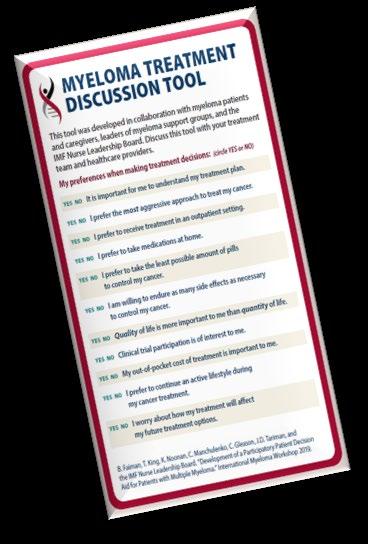





Subspecialists


You and Your Care Partner(s)









STABLE OF TREATMENT FINDING YOUR GAIT GOING THE DISTANCE
Your team may be able to help, but only if they know how you feel.
Unmanaged
can cause:
• Calcium elevation
• Renal dysfunction
• Low blood counts
• Infection Risk
• Blood clots
• Bone pain
• Neuropathy
• Fatigue


can cause:
• GI symptoms
• Renal dysfunction
• Low blood counts
• Infection Risk
• Blood clots
• Neuropathy
• Fatigue






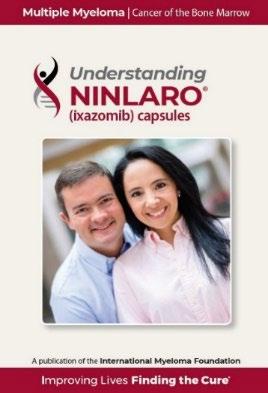





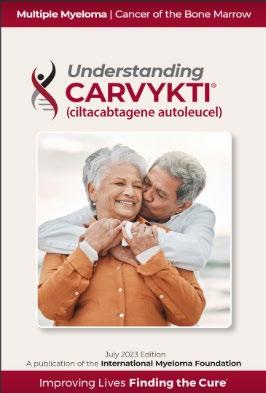

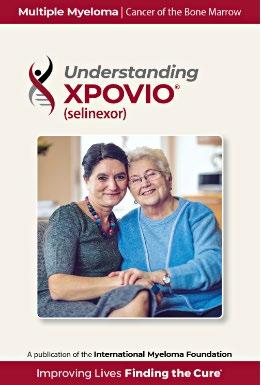
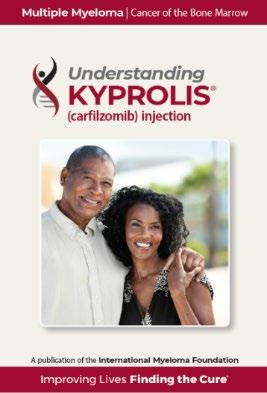





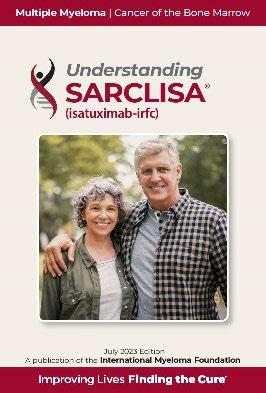



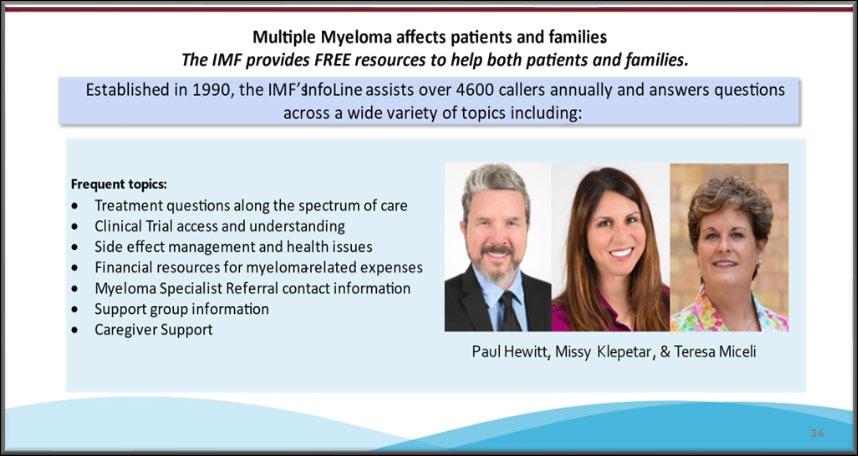
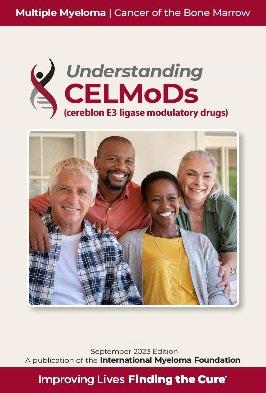
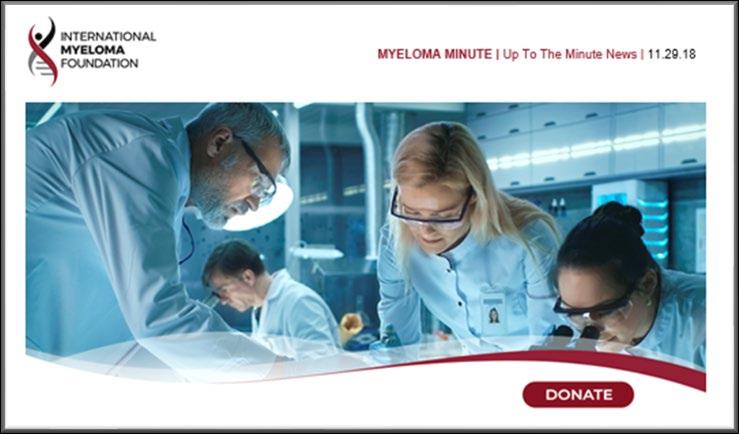



If you want to go fast, go alone, if you want to go far, go together
• Care partners may help in many ways including medical appointments, managing medication, daily living, physical assistance, emotional support, myeloma knowledge, healthy lifestyle, patient advocacy, financial decisions
• Care partners can be a spouse, close relative, a network of people (family, friends, neighbors, church members, etc)


• Caring for the Care Partner
– Recognize that caregiving is difficult/stressful

– Encourage care partners to maintain their health, interests, and friendships
– The IMF has information and resources to help care partners




FINDING YOUR GAIT
GOING THE DISTANCE
• Multiple studies demonstrate that strong social ties are associated with
– Increased longevity including people with cancer
– Improved adherence to medical treatment leading to improved health outcomes
– Lower risk of developing cardiovascular diseases
– Increased sense of purpose and life satisfaction
– Reduced stress and anxiety
– Improved mood and happiness
– Enhanced resilience
Martino J, et al. Am J of Lifestyle Med. 2015;11(6):466-475. Yang YC, et al. Proc Natl Acad Sci U S A. 2016;113(3):578-583.
Pinquart M and Duberstein PR. Crit Rev Oncol Hematol. 2010; 75(2):122–137.
• Strategies for enhancing social connection
– Deepen existing relationships with family, friends, and loved ones
– Build new relationships by participating in a support group, joining clubs or organizations, or volunteering
Tip: Start with small steps outside your comfort zone. Call a loved one you haven’t spoken to in a while. Invite a person you’d like to know better for lunch, coffee, or a walk.

Hetherington C. Healthnews. https://healthnews.com/longevity/healthspan/social-connection-andlongevity/#:~:text=Research%20consistently%20demonstrates%20t hat%20people,of%20fulfillment%20in%20your%20life. Accessed Feb 1 2024.

Have a Primary Care Doctor
Have Recommended Health Screenings
• Blood pressure
• Cholesterol
• Cardiovascular disease
• Diabetes
• Colonoscopy
• Vision
• Hearing
• Dental checkups & cleaning
• Women specific: mammography, pap smear
• Men specific: prostate
Maintain a healthy weight
• Good nutrition
• Activity or exercise
• Sufficient sleep

STABLE OF TREATMENT FINDING YOUR GAIT GOING THE DISTANCE
An ounce of prevention is worth a pound of cure.
Benjamin Franklin
Faiman B, et al. CJON. 2017;21(5)suppl:19-36. Dimopoulous M, et al. Leukemia. 2009;23(9):1545-56.
Brigle K, et al. CJON. 2017;21(5)suppl:60-76. Faiman B, et al. CJON. 2017;21(5)suppl:19-36. Faiman B, et al. CJON. 2011;15suppl:66-76. Miceli TS, et al. CJON. 2011;15(4)suppl:9-23.


John Theurer Cancer Center, Hackensack
University Medical Center, MedStar Georgetown
University Hospital
• Review the importance of DEPTH of response in early treatment of myeloma and the increasing use of MRD testing
• Discuss emerging approaches in transplant eligible patients, including quadruplet therapy and stem cell transplantation
• Outline the approach to a patient not going to transplant and how to optimize continuous therapy


>1 Trillion Disease Burden (# of myeloma cells)
>1 Billion
>10 Million
1 myeloma cell in 100K to 1 million normal cells



At diagnosis

Partial response 50% reduction in M protein

Very good partial response 90% reduction in M protein immunofixation positive only

Complete remission No M-protein immunofixation negative

Minimal Residual Dis Flow Cytometry

Minimal Residual Dis Next Generation Molecular testing
MRD refers to the persistence of residual tumor cells after treatment and is responsible for relapse1
Current techniques can detect MRD with a sensitivity of 10-6 for MM cells2
MR→PR→
VGPR→CR →sCR
10–2 10–6 Induction Consolidation Maintenance Preemptive
MRDhigh
MRDlow
MRDneg
MRDpos

1. Adapted from Hauwel M, Matthes T. Swiss Med Wkly 2014:144:w13907


B,
al. J Clin Oncol. 2017; 35(25): 2900–2910
Lahuerta JJ, Paiva etNewly Diagnosed MM and Risk Stratified
Factors to be considered for ASCT
Age, performance status (PS), comorbidities (R-MCI score, HCT-Cl) and organ function
ASCT Eligible ASCT Ineligible
1. Most patients will be given a combination of drugs to control the disease quickly
2. We don’t “save the best for last” because early therapies have a long term effect on survival
3. We seek a DEEP and DURABLE response
4. We mix and match from the 3 major classes of drugs and add steroids:
Proteasome Inhibitors – most often botezomib (Velcade)
Immunomodulatory Drugs – lenalidomide (Revlimid)
Monoclonal Antibodies – daratumumab (Darzalex)
5. We decide early on whether or not someone will have a stem cell transplant
-Patients aged 18-65 yrs with symptomatic newly diagnosed MM following 1 cycle of RVD -56 sites within the United States from 2010 to 2018
End Points of Study and Follow-up
ASCT: Melphalan 200 mg/m2 + Stem Cell Support (n = 310)
• Primary end point: progression-free survival (time to next relapse)
• Secondary end points included:
• Response rates, overall survival, quality of life, and adverse events
• Follow-up on participant status : median of 6 years

CI, confidence interval; HR, hazard ratio; Data cut off: 12/12/21
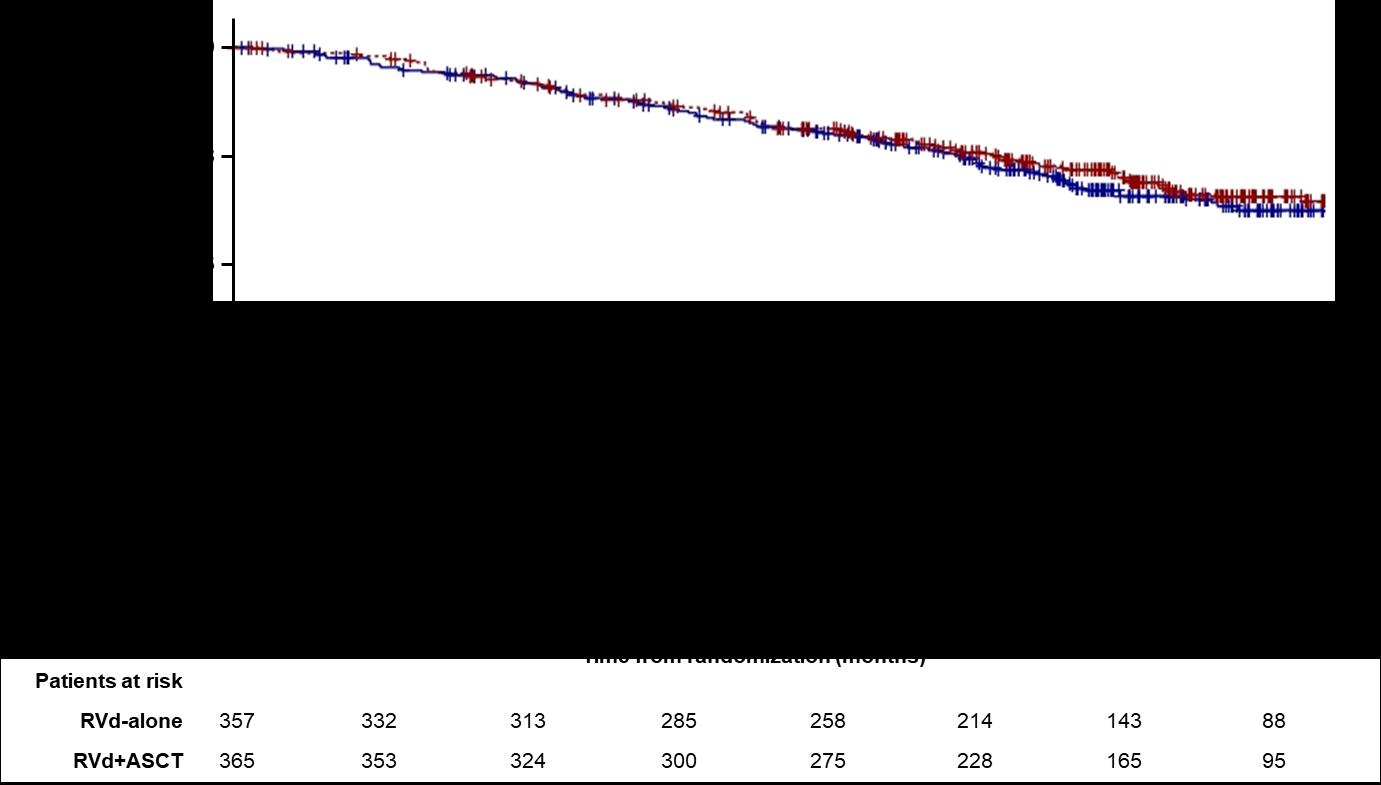
Median follow-up 76 months
*p-value adjusted using Bonferroni’s correction to control overall family-wise error rate for secondary outcomes
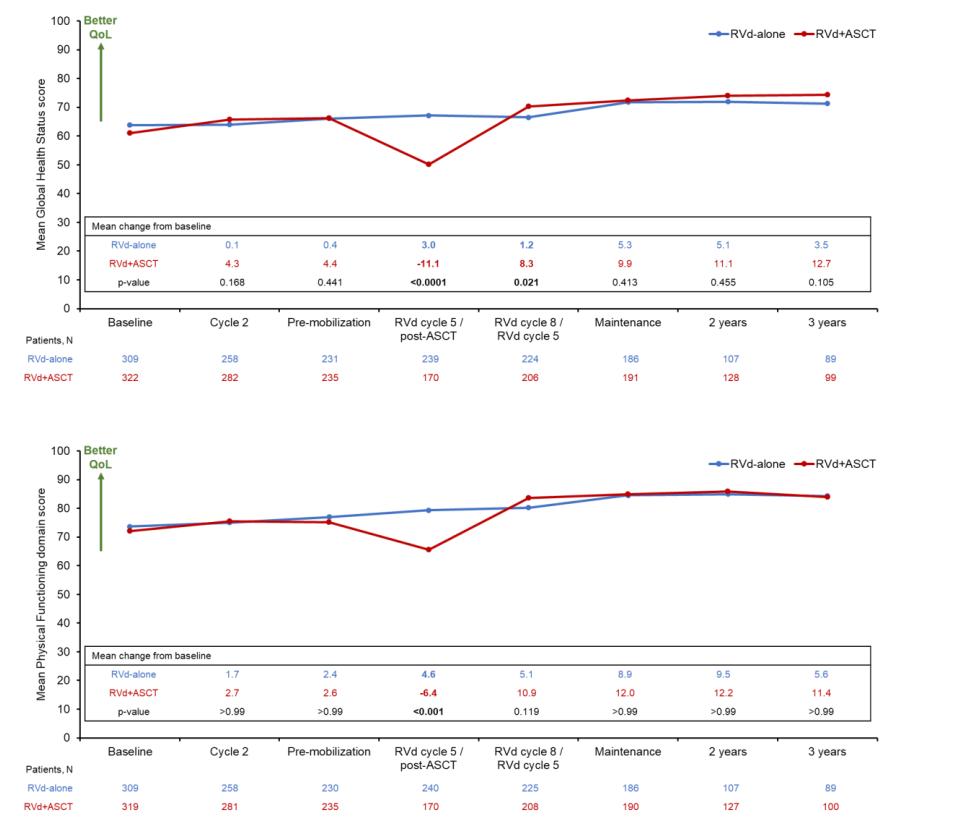
Global Health Status/QoL, Physical Functioning
• ASCT remains very relevant and important in prolonging PFS in younger and eligible patients
• BUT it may not be mandatory in all eligible patients upfront
• As with other agents, we INDIVIDUALIZE the sequencing patterns
• ASCT does carry genuine toxicity, short term and long term
• We may become callous to these toxicities
• Maintenance therapy remains an important part of myeloma therapy
But can we do better than triplets?
Key eligibility criteria
• Transplanteligible NDMM
• Age 18-70 years
• ECOG PS ≤2 1:1 randomization (N=709) a VRd V: 1.3 mg/m2 SC Days 1, 4, 8, 11
R: 25 mg PO Days 121
d: 40 mg PO/IV Days 1-4, 9-12 D-VRd
DARA: 1,800 mg SCb
QW Cycles 1-2
Q2W Cycles 3-4
VRd administered as in the VRd group
Induction Consolidation Maintenance 4 cycles of 28 days 2 cycles of 28 days 28-day cycles

VRd V: 1.3 mg/m2 SC Days 1, 4, 8, 11 R: 25 mg PO Days 121 d: 40 mg PO/IV Days 1-4, 9-12 D-VRd
DARA: 1,800 mg SCb
Q2W
VRd administered as in the VRd group D-R DARA: 1,800 mg SCb Q4W R: 10 mg PO Days 1-28 MRD positive MRD negativ e R R: 10 mg PO Days 1-28 until PD
Continue D-R until PD
Discontinue DARA therapy only
Primary endpoint: PFSc
Key secondary endpoints: Overall ≥CR rate,c overall MRD-negativity rate,d OS
Discontinue DARA therapy only after ≥24 months of D-R maintenance for patients with ≥CR and 12 months of sustained MRD negativity
Restart DARA therapy upon confirmed loss of CR without PD or recurrence of MRD



et. al. Late-breaking Abstracts Session, ASH 2023. Accessed from: https://ash.confex.com/ash/2023/webprogram/Paper191911.html


et. al. Late-breaking Abstracts Session, ASH 2023. Accessed from: https://ash.confex.com/ash/2023/webprogram/Paper191911.html


Isa (IV) 10 mg/kg Cycle 1 Cycle 2–3
Bor (SC) 1.3 mg/m² Len (PO) 25 mg
(PO) 20 mg
Induction phase (3 x 6-week cycles)
Isa (IV) 10 mg/kg: Cycle 1
phase (4-week cycles)
and Heidelberg University Hospital | ASH 2021
ASCT, autologous stem cell transplant; D, day; d/Dex, dexamethasone; HDT, high-dose therapy; Isa, isatuximab; IV, intravenous; NDMM, newly diagnosed multiple myeloma; PD, progressive disease; PO, oral; R/Len, lenalidomide; SC, subcutaneous; Te, transplant eligible; V/Bor, bortezomib; RVd is off label use in some countries according to the lenalidomide summary of product characteristics. 1. ClinicalTrials.gov: NCT03617731


Patients with MRD negativity at the end of induction therapy
OR 1.83 (95% CI 1.34–2.51)
Low number of not assessable/missing† MRD status: Isa-RVd (10.6%) and RVd (15.2%)
Isa-RVd is the first regimen to demonstrate a rapid and statistically significant benefit from treatment by reaching a MRD negativity of 50.1% at the end of induction and to show superiority vs. RVd in a Phase 3 trial


Key eligibility criteria: TE NDMM patients
aged <70 years
Stratification:
- Centralized FISH (standard risk/missing vs. high risk defined as del(17p) and/or t(4;14) and/or t(14;16); - ISS (I vs. II and III)
Cy: 2-3 g/m2 followed by G-CSF for stem-cell collection and MEL200-ASCT
MEL: 200 mg/m2 followed by ASCT
Post-ASCT consolidation

Patients
(N=151) KRd (N=151)
Patients
(N=151) KRd (N=151)
≥VGPR after consolidation was 94% in both arms; ≥CR 74% vs 72% and sCR 64% vs 67% in the IsaKRd vs KRd arms.
High MRD compliance and sample quality (97-100% of sample evaluable at 10-5 and 10-6 cut off.
Consistent MRD results were detected by next-generation flow
In the logistic regression analysis, ORs, 95% CIs, and p-values were adjusted for stratification factor.

(N=151)


1 HRCA was defined as the presence of one of the following high-risk cytogenetic abnormalities: del(17p13.1), t(4;14) (p16.3;q32.3), t(14;16) (q32.3;q23), gain(1q21), or amp(1q21); 2+ HRCA was defined as the presence of at least

• Isa-KRd significantly increased post-consolidation 10-5 and 10-6 MRD negativity, as compared with KRd
• Isa-KRd significantly increased 10-5 and 10-6 MRD negativity after each treatment phase (Induction, Transplantation, Consolidation) .
• Isa-KRd consistently increased MRD negativity at 10-5 and 10-6 in all subgroups of patients, including high-risk and very high-risk disease.
• Isa-KRd treatment was tolerable, with a toxicity profile similar to that in previous reports.
• 10-6 MRD negativity cut-off is more informative.
• 1-year sustained MRD negativity will be available in 2024
• With a longer follow-up, this trial can offer the opportunity to explore the correlation between depth of MRD negativity and PFS/OS.
Dara-KRd
• Daratumumab 16 mg/m2 days 1,8,15,22 (days 1,15 C 3-6; day 1 C >6)
• Carfilzomib (20) 56 mg/m2 Days 1,8,15
• Lenalidomide 25 mg Days 1-21
• Dexamethasone 40mg PO Days 1,8,15,22




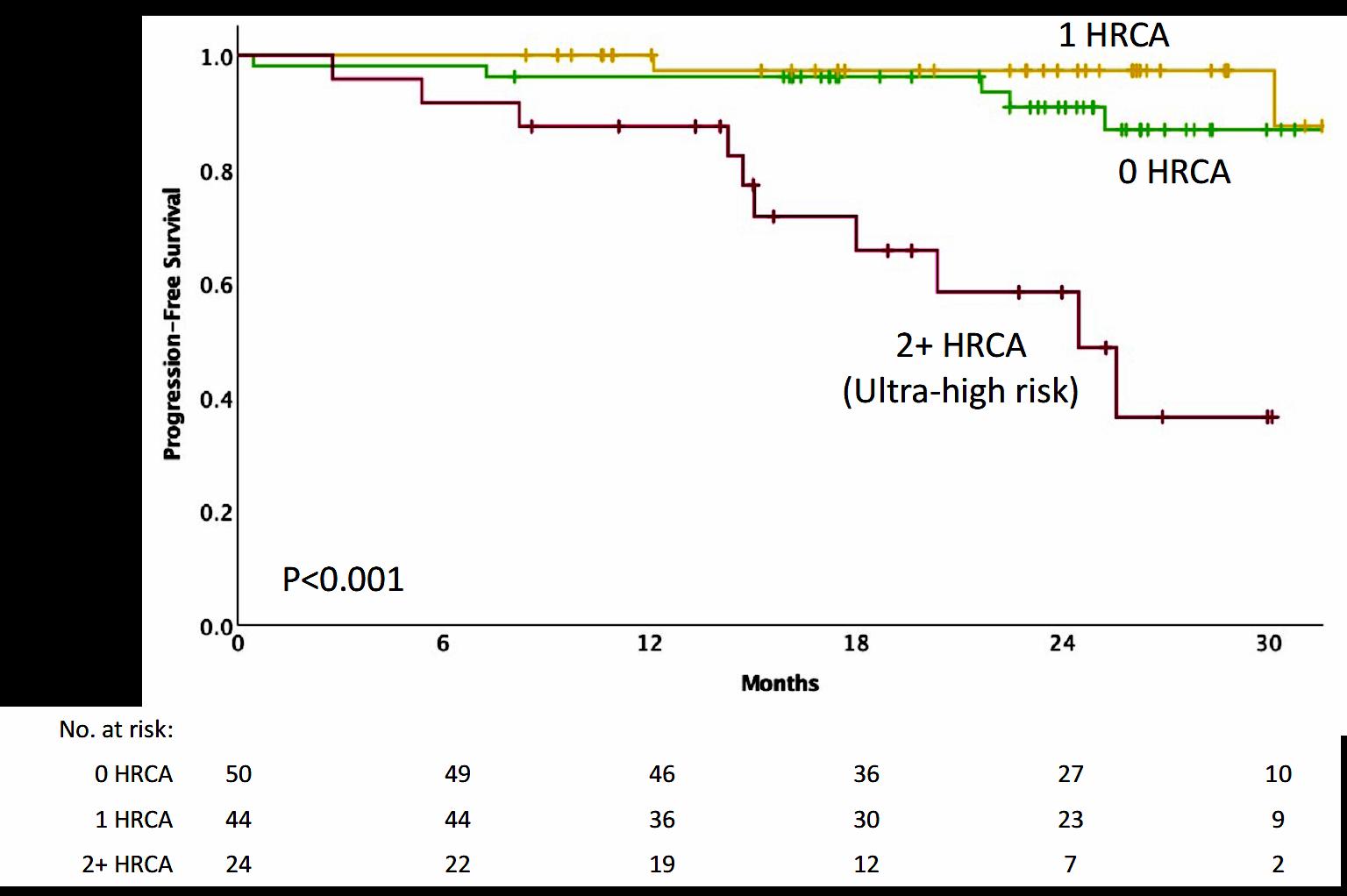

• We are transitioning to quadruplets in frontline eligible patients
• BUT the optimal length of a quadruplet is still to be determined!
• Transplant still has a role in MM even with long term use of novel agents
• Consolidation therapy may deepen responses and should be considered in patients who have not achieved VGPR
• MRD guided discontinuation may be possible in lower risk groups but not high risk patients
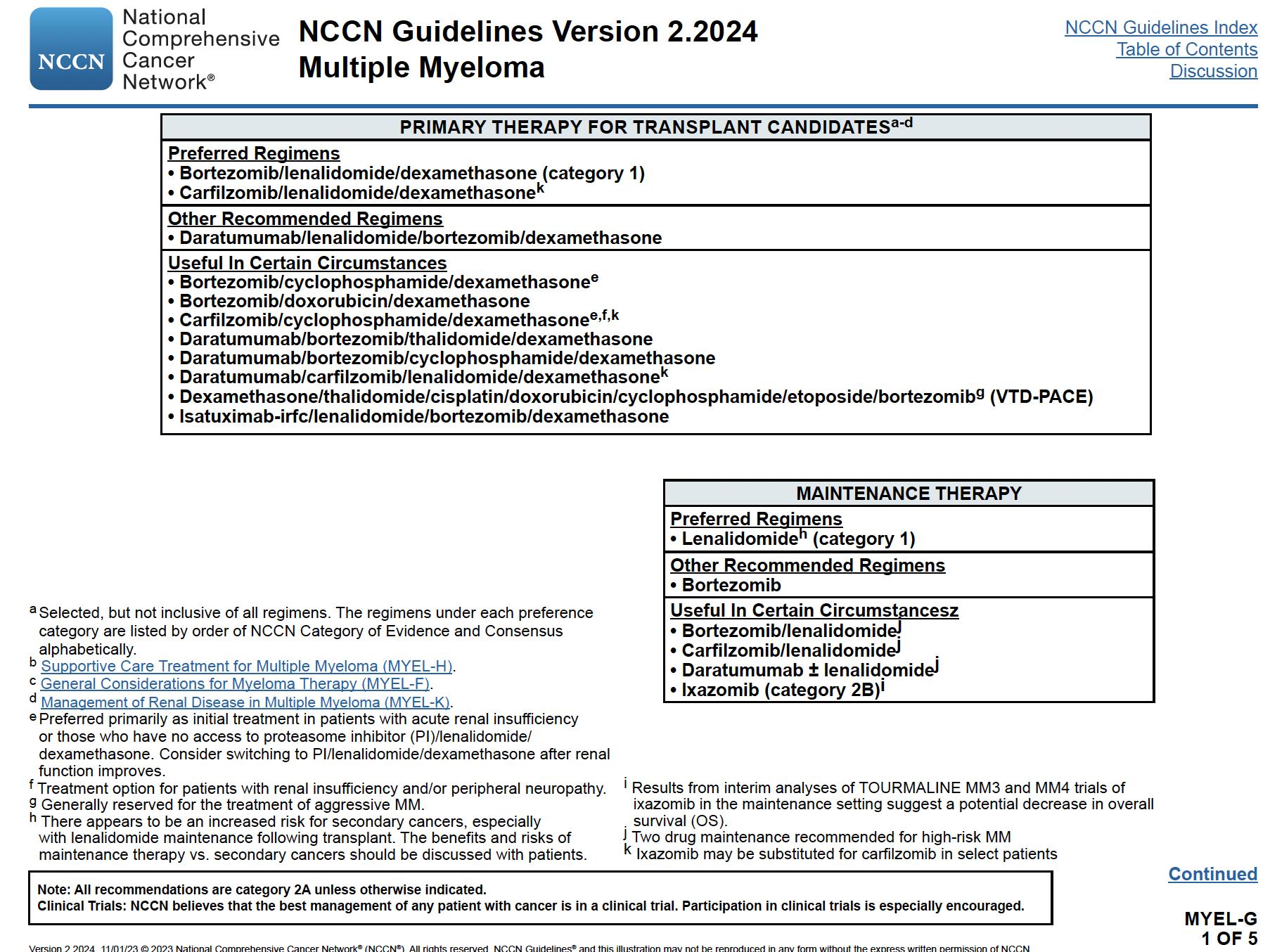
How do we decide who is eligible for transplant?
Recommendation
Patients should be referred to a transplant center to determine transplant eligibility
Evidence Rating
Type: Evidence based
Evidence quality: Intermediate, benefit outweighs harm
Strength of recommendation: Moderate
Chronologic age and renal function should not be the sole criteria used to determine eligibility for SCT.
Type: Evidence based
Evidence quality: Intermediate, benefit outweighs harm
Strength of recommendation: Moderate
Mikhael J, et al. J Clin Oncol. April 1, 2019. DOI:10.1200/JCO.18.02096.




IMWG score of 1 = Intermediate-Fit
3-year OS was 76% (HR=1.61; 95% CI 1.02-2.56; p=.042)
Toxicities 16.7% (HR 1.23, 95% CI 0.89-1.71; p=.217) and
Discontinuation 20.8% (HR=1.41; 95% CI 1.00-2.01; p=.052).
Palumbo A Blood Engelhardt M. Haematologica 2016 Facon et al. Leukemia 2020 Bonanad et al. JGO 2015

‒ Patients were enrolled in MAIA from March 2015 through January 2017
D: 16 mg/kg IV
Key eligibility criteria
• TIE NDMM
• ECOG PS score 0-2
• CrCl
≥30 mL/min
QW Cycles 1-2, Q2W Cycles 3-6, then Q4W thereafter until PD
R: 25 mg PO Days 1-21 until PD
da: 40 mgb PO or IV
Days 1, 8, 15, 22 until PD
R: 25 mg PO Days 1-21 until PD
d: 40 mg PO Days 1, 8, 15, 22 until PD
Rd Cycles: 28 days Rd
End-oftreatment visit (30 days after last dose) Longterm follow-up
Primary endpoint
• PFS Key secondary endpoints
• OS
• PFS2
• ORR
• CR/sCR rate
• MRD (NGS; 10–5) 1:1 randomisation
MAIA is a multicentre, randomised, open-label, active-controlled, phase 3 study of D-Rd versus Rd alone in patients with NDMM who are transplant


Median follow-up
Primary: 28.0 months1
Median follow-up
Update: 56.2 months
• D-Rd induced deeper responses with significantly higher rates of ≥CR and
• With >28 months of additional follow-up, responses deepened with continued DARA therapy

• D-Rd continued to demonstrate a significant PFS benefit, with median PFS not reached with D-Rd
• These data provide a new PFS benchmark in patients with NDMM who are transplant ineligible

• Although ASCT remains the standard of care, use is likely to decline in patients who are 65-75 or with significant comorbidities
• Continuous therapy has resulted in better outcomes
• The balance of toxicity and efficacy is particularly important in this population
• ESPECIALLY with dexamethasone
• Most common approach is to select 2 agents from the 3 Novel Classes (PIs, IMiDs and MoAbs)
• Most will use DRD in standard risk patients
• Some may favor VRD in certain high risk patients
• DRD is more easily delivered and feasible
• D-VRD may well be a future standard of care even in these patients

Bortezomib
Lenalidomide
Carfilzomib
Pomalidomide
Panobinostat
Daratumumab
Ixazomib
Elotuzumab
Lenalidomide
Bortezomib
Ixazomib
Lenalidomide + PI
SCT +/- More induction
Carfilzomib
Combinations
Selinexor
Isatuximab
Idecabtagene autoleucel
Ciltacabtagene autoleucel
Teclistamab
Talquetamab
Elranatamab
Isa-VRD Isa-KRD D-KRD
CAR T or Bispecifics?
Daratumumab?
Novel CAR T Cell Therapies
Bispecific/Trispecific Antibodies
CelMod Agents
Venetoclax?
Modakafusp
Multiple small molecules
Thank you to our sponsors!










Thank you to our sponsors!









John Theurer Cancer Center, Hackensack University
Medical Center, MedStar Georgetown University
Hospital
• Discuss the principle of consolidation therapy and its application in myeloma
• Outline the major options for maintenance therapy
• Introduce the newer trend for the use of dual maintenance
• Provide an algorithm for maintenance based on risk status

• Induction: Intense and short term therapy with goal to achieve rapid remission
• Consolidation: Intense and shorter term therapy with goal of deep remission
• Maintenance: Less intense longer term therapy with goal of better PFS and OS
What does the Ideal Maintenance therapy look like?
• Deepen remission
• Prolong remission
• Easy to administer
• Minimal toxicity

CALGB 100104
(accrual 8/2005 – 11/2009)
INDUCTION
ASCT
1:1 RANDOMIZATION
“NO EVIDENCE OF PD”
Primary Endpoint: PFS
IFM 2005-02
(accrual 6/2006 – 8/2008)
INDUCTION
ASCT
1:1 RANDOMIZATION
“NO EVIDENCE OF PD”
Primary Endpoint: PFS
LEN: 2 COURSES
LEN MNTCa (n = 231) PLACEBO (n = 229)
GIMEMA (RV-MM-PI-209) (accrual 11/2007 – 7/2009)
2 × 2 DESIGN
LEN + DEX × 4 INDUCTION
Primary Endpoint: PFS
MPR: 6 COURSES
INTERIM AN Dec 2009 Jan 2010
INTERIM ANALYSIS AND UNBLINDING
CROSSOVER BEFORE PD ALLOWED CONTINUED TREATMENT
LEN MNTCa (n = 307) PLACEBO (n = 307) ALL TREATMENT DISCONTINUED Jan 2011 CONTINUED TREATMENT NO CROSSOVER BEFORE PD ALLOWED
LEN MNTCb (n = 67) NO TREATMENT (n = 68)
CONTINUED TREATMENT CONTINUED TREATMENT PRIMARY ANALYSIS
Target population of patients with NDMM who received LEN maintenance or placebo/no maintenance after ASCT
a Starting dose of 10 mg/day on days 1-28/28 was increased to 15 mg/day if tolerated and continued until PD.
b Patients received 10 mg/day on days 1-21/28 until PD.
ASCT, autologous stem cell transplant; LEN, lenalidomide; NDMM, newly diagnosed multiple myeloma; MNTC, maintenance; MPR, melphalan, prednisone, and Len; PD, progressive disease.


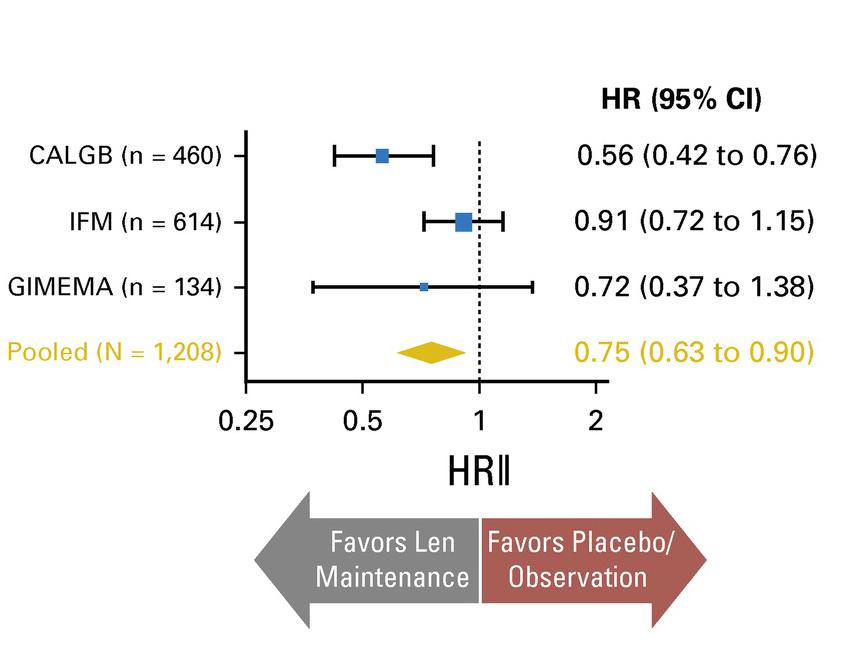
McCarthy et al. J Clin Oncol. 2017, 35:3279-3289.



McCarthy et al. J Clin Oncol. 2017, 35:3279-3289.

3 randomized trials: 1,209 patients:
• Median follow up 6.6 years
• PFS 52.8 months for lenalidomide vs 23.5 in placebo
• PFS2 also prolonged 73.3 months vs 56.7 (ie not creating more aggressive clone)
• Median overall survival: 86 months v. not reached: P = 0.001
• Benefit for ≤ PR as well as VGPR/CR patients
• 29% discontinuation rate with lenalidomide
• Second primary malignancy rate higher at 6.1% vs 2.8% in placebo after PD

Induction
Treated on Myeloma XI induction protocols
N=1551 (TE=828; TNE=723)
Maintenance
10 mg/day, days 1‒21/28
Observation
Median follow-up: 27 months (IQR 13‒43)
Exclusion criteria
• Failure to respond to lenalidomide as induction IMiD, or development of PD
• Previous or concurrent active malignancies Lenalidomide

Significant improvement in PFS from 18 to 36 months, HR=0.45
Median PFS, months [95% CI]
Lenalidomide (n=857) 36 [31, 39]
Observation (n=694) 18 [16, 20]

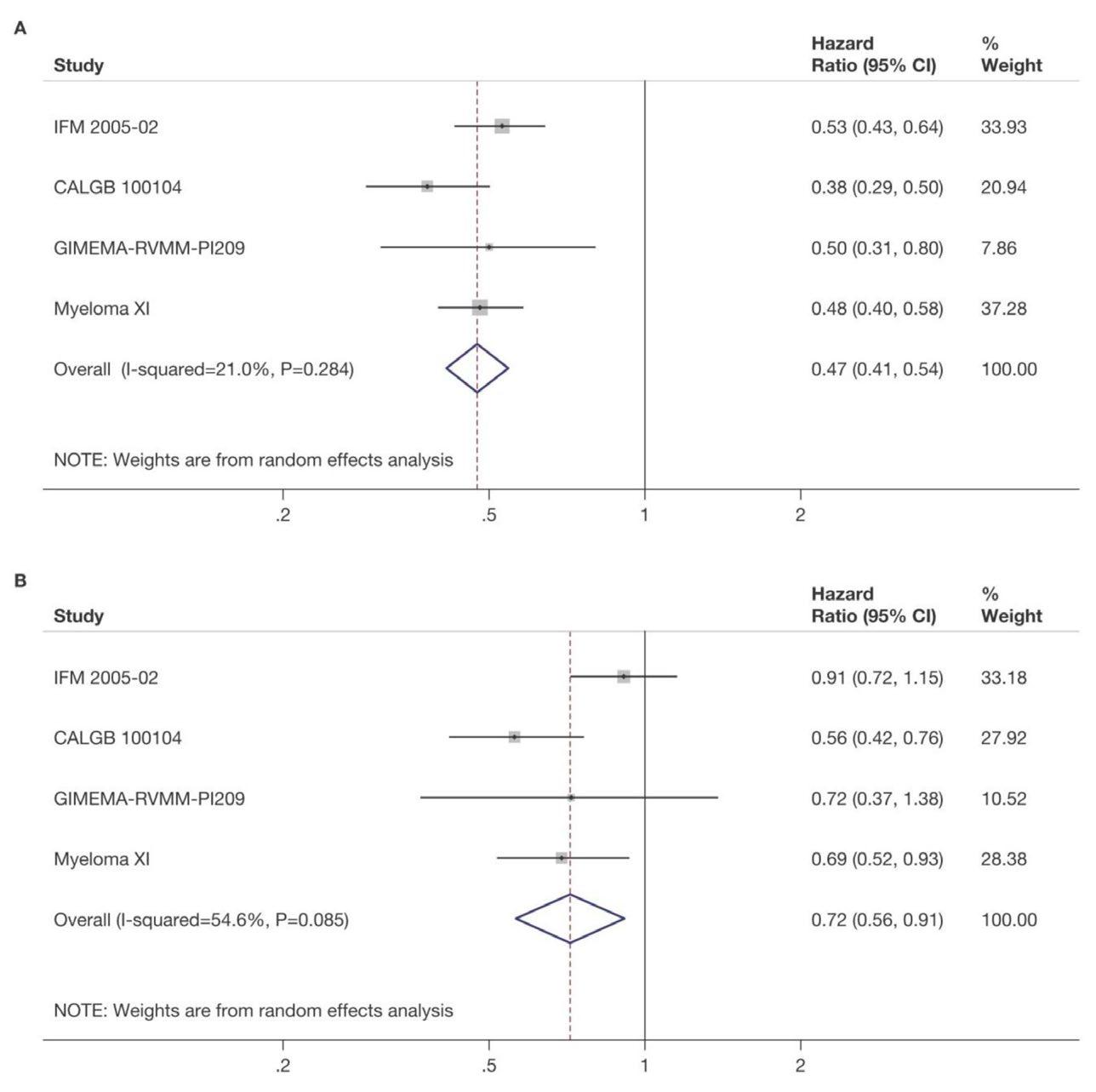
HR 0.47
HR 0.72

But can we do better than lenalidomide alone?
4x KCd
K: 36^ mg/m2 d 1-2,8-9,15-16
C: 300 mg/m2 d 1,8,15
d: 20 mg. d 1-2,8-9,15-16,22-23
4x KRd
K: 36^ mg/m2 d 1-2,8-9,15-16
R: 25 mg d 1-21
d: 20 mg. d 1-2,8-9,15-16,22-23
Intensification with high-dose melphalan followed by autologous stem-cell reinfusion
4x KCd
K: 36 mg/m2 d 1-2,8-9,15-16
C: 300 mg/m2 d 1,8,15
d: 20 mg. d 1-2,8-9,15-16,22-23
R: 10 mg days 121, until progression or intolerance
4x KRd
K: 36 mg/m2 d 1-2,8-9,15-16
R: 25 mg d 1-21
d: 20 mg. d 1-2,8-9,15-16,22-23
4x KRd
K: 36^ mg/m2 d 1-2,8-9,15-16
R: 25 mg d 1-21
d: 20 mg. d 1-2,8-9,15-16,22-23
4x KRd
K: 36 mg/m2 d 1-2,8-9,15-16
R: 25 mg d 1-21
d: 20 mg. d 1-2,8-9,15-16,22-23
4x KRd
K: 36 mg/m2 d 1-2,8-9,15-16
R: 25 mg d 1-21 d: 20 mg. d 1-2,8-9,15-16,22-23
K: 36 mg/m2 d 1, 2, 15, 16 up to 2 years*
R: 10 mg days 1-21, until progression or intolerance
^20 mg/m2 on days 1-2, cycle 1 only. *Carfilzomib 70 mg/m2 days 1, 15 every 28 days up to 2 years for patients that have started the maintenance treatment from 6 months before the approval of Amendment 5.0 onwards.
NDMM, newly diagnosed multiple myeloma, R1, first randomization (induction/consolidation treatment); R2, second randomization (maintenance treatment); ASCT, autologous stem-cell transplantation; K, carfilzomib; R, lenalidomide; C, cyclophosphamide; d, dexamethasone; KCd_ASCT, KCd induction-ASCT-KCd consolidation; KRd_ASCT, KRd induction-ASCT-KRd consolidation; KRd12, 12 cycles of KRd.
Median follow-up from Random 1: 51 months (IQR 46‒55)
Median follow-up from Random 2: 37 months (IQR 33‒42)
3-year PFS reported in the figure. Random 1, first randomization (induction/consolidation treatment); ASCT, autologous stem-cell trasplantation; K, carfilzomib; R, lenalidomide; C, cyclophosphamide; d, dexamethasone; KCd_ASCT, KCd induction-ASCT-KCd consolidation; KRd_ASCT, KRd induction-ASCT-KRd consolidation; KRd12, 12 cycles of KRd; Random 2, second randomization (maintenance treatment); p, p-value; HR, hazard ratio; CI,
• It appears that dual maintenance therapy prolongs PFS
• This occurs in both standard risk AND high risk patients
• It further opens the door to other dual maintenance strategies currently being used and explored:
• Lenalidomide + Bortezomib
• Lenalidomide + Ixazomib
• Lenalidomide + Daratumumab
• Others??

• CASSIOPEIA randomized pts to no maintenance vs dara q 8 weeks
• Overall there was a benefit to having dara maintenance vs placebo
• However, if dara had been given at induction, that benefit did not seem to continue (ie If you had dara upfront, it didn’t add more to maintenance)
• However, PERSEUS added Dara to Lenalidomide for up to 2 years based on sustained MRD status
• There is still more to learn, but there is much more comfort use dara+len as maintenance, especially in higher risk patients

Key eligibility criteria
• Transplanteligible NDMM
• Age 18-70 years
• ECOG PS ≤2 1:1 randomization (N=709) a VRd V: 1.3 mg/m2 SC Days 1, 4, 8, 11
R: 25 mg PO Days 121
d: 40 mg PO/IV Days 1-4, 9-12 D-VRd DARA: 1,800 mg SCb
QW Cycles 1-2
Q2W Cycles 3-4
VRd administered as in the VRd group
Maintenance 4 cycles of 28 days 2 cycles of 28 days 28-day cycles

Discontinue DARA therapy only Induction
VRd V: 1.3 mg/m2 SC Days 1, 4, 8, 11 R: 25 mg PO Days 121 d: 40 mg PO/IV Days 1-4, 9-12 D-VRd
DARA: 1,800 mg SCb
Q2W
VRd administered as in the VRd group D-R DARA: 1,800 mg SCb Q4W R: 10 mg PO Days 1-28
positive MRD negative R R: 10 mg PO Days 1-28 until PD
Continue D-R until PD
Primary endpoint: PFSc
Key secondary endpoints: Overall ≥CR rate,c overall MRD-negativity rate,d OS
Discontinue DARA therapy only after ≥24 months of D-R maintenance for patients with ≥CR and 12 months of sustained MRD negativity
Restart DARA therapy upon confirmed loss of CR without PD or recurrence of MRD

Charlotte Pawlyn1,2, Tom Menzies3, Faith Davies4, Ruth de Tute5, Rowena Henderson3, Gordon Cook3,6, Matthew Jenner7, John Jones8, Martin Kaiser1,2, Mark Drayson9, Roger Owen8, David Cairns3, Gareth Morgan4, Graham Jackson10
1) The Institute of Cancer Research, London, UK; 2) The Royal Marsden Hospital, London, UK; 3) Clinical Trials Research Unit, Leeds Institute of Clinical Trials Research, University of Leeds, Leeds, UK; 4) Perlmutter Cancer Center, NYU Langone Health, New York, US; 5) HMDS, Leeds Cancer Centre, Leeds Teaching Hospitals NHS Trust, Leeds, United Kingdom; 6) Leeds Cancer Centre, Leeds Teaching Hospitals NHS Trust, Leeds, UK; 7) University Hospital Southampton NHS Foundation Trust, Southampton, UK; 8) Kings College Hospital NHS Foundation Trust, London, UK; 9) Institute of Immunology and Immunotherapy, University of Birmingham, Birmingham, UK; 10) Department of Haematology, University of Newcastle, Newcastle-upon-Tyne, UK
On behalf of the Myeloma XI Trial Management Group and NCRI Haem-Onc Clinical Studies Group
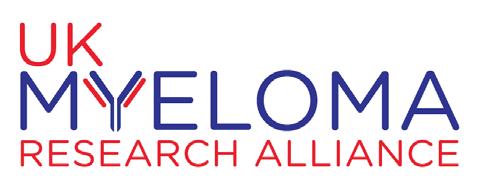

• These data suggest an ongoing PFS benefit associated with continuing lenalidomide maintenance beyond at least 4-5 years in the overall patient population

• Even in patients with sustained MRD negativity, there is evidence of benefit from continuing lenalidomide maintenance for at least 3 years in total
• Randomised trials to address the impact of stopping lenalidomide maintenance in patients with sustained MRD negativity could be considered, at no earlier than 3 years
• In patients who are MRD +ve these data support continuing lenalidomide until disease progression
• No evidence of cumulative haematological toxicity was identified
• These findings emphasise the need for long term follow up of maintenance studies to enable the exploration of such questions
• There is a planned powered OS update of Myeloma XI in 2023
• Should post-transplant maintenance therapy be recommended for all patients?
• Yes
• Which agent should be used?
• Lenalidomide remains the standard of care – we may be adding daratumumab soon
• What is the optimal duration?
• Treatment until progression remains the standard of care
• What should patients with high-risk cytogenetics receive?
• Consider lenalidomide + proteasome inhibitor or daratumumab; clinical trial
• Should MRD status dictate maintenance therapy?
• Not outside of a clinical trial
• What about Second Primary Malignancies?
• They are real, require a discussion and monitoring, but are outweighed by benefit
 Joseph Mikhael, MD
Joseph Mikhael, MD
International Myeloma Foundation

• Discuss an approach to treating relapsed myeloma based on patient, disease and treatment characteristics
• Review the important trend of using an aggressive approach in early treatment of myeloma
• Outline the key results from recent trials in early relapse
• Discuss the approach to late relapse and the use of novel therapies such as CAR T and bispecific antibodies

1st Relapse 2nd 3rd 4th 5th and beyond
Fewer patient are eligible for therapy in each subsequent line of therapy (LOT)
Figure adapted from: Yong, K et al. Br J Haematol 2016;175(2):252-264
• It is not a simple algorithm of treatment #1 then 2 then 3…
• Leverage the benefit of multiple mechanisms of action in combination therapy
Categories:
• 1-3 prior lines
• Later Relapse
• Refractory to PI, IMiD and MoAb = Triple Class Refractory
Principles
1. Depth of Response matters…likely incorporate MRD soon 2. High risk vs standard risk…more aggressive Rx in high risk
3. Balance efficacy and toxicity…initially and constantly assess
4. Overcome drug resistance…change mechanism of action when possible
• Relapsed: recurrence (reappearance of disease) after a response to therapy
• Refractory: progression despite ongoing therapy
• Progression: change in M protein/light chain values
• Line of therapy: change in treatment due to either progression of disease or unmanageable side effects
• Note: initial (or induction) therapy + stem cell transplant + consolidation/ maintenance therapy = 1 line of therapy



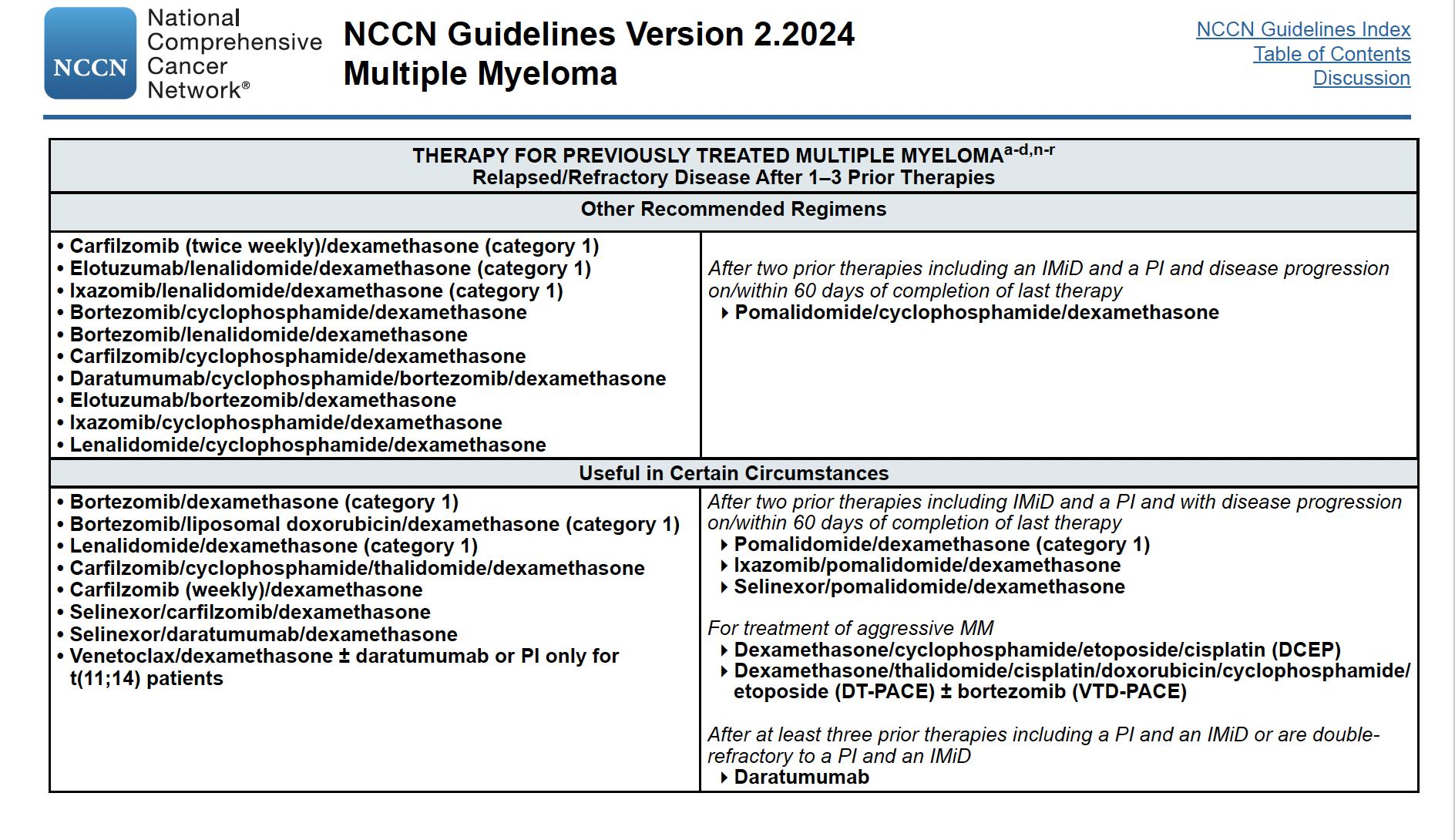
• Nature of the relapse
– Biochemical vs symptomatic
• Risk stratification
– High-risk chromosomal abnormalities: del(17p), t(4;14), t(14;16)
• Disease burden
• Previous therapies
• Prior treatmentrelated adverse event
• Regimen-related toxicity
• Depth and duration of previous response
• Cost to patient
Patient-Related
• Renal insufficiency
• Hepatic impairment
• Comorbidities
• Preferences
• Social factors
– Support system
– Accessibility to treatment center
– Insurance coverage


General Principles
Use mechanisms of action not previously used
Do not continue to use lenalidomide if progressing on len maintenance
Triplets are preferred over doublets
In real practice - most patients receiving VRD (Bortezomib-Lenalidomide-Dex) like regimens, 1st relapse is typically
Daratumumab + Pomalidomide + Dex (APOLLO)
Isatuximab + Pomalidomide + Dex (ICARIA)
Daratumumab + Carfilzomib + Dex (CANDOR)
Isatuximab + Carfilzomib + Dex. (IKEMA)
Selinexor + Bortezomib + Dex (BOSTON) And this JUST IN – CAR T cell therapies can be used as early as first relapse!

Preferred options: DRd
(or KRd)
First Relapse
Alternatives:
DVD, Kd, DaraKd, IsaKd, IRd, Erd
When Dara, Isa, K not available:
Rd, Vd, VTD, VCD, VMP
Preferred options: PVd DaraKd IsaKd
Consider salvage auto transplant in eligible
Second options
DaraVd;Kd
Other options:
KPd; DaraPd; Ipd
When Dara, isa, K or P not available: VCD, Vd, VMP
DKd,daratumumab/carfilzomib/dexamethasone; DPd, daratumumab/pomalidomide/dexamethasone; DRd, daratumumab/lenalidomide/ dexamethasone; DVd, daratumumab/bortezomib/dexamethasone; Elo–Rd, elotuzumab/lenalidomide/dexamethasone; Ipd, ixazomib/pomalidomide/dexamethasone; Ird, ixazomib/lenalidomide/dexamethasone; Isa–Kd, isatuximab/carfilzomib/dexamethasone; Kd, carfilzomib/dexamethasone; KPd, carfilzomib/pomalidomide/dexamethasone; KRd, carfilzomib/lenalidomide/ dexamethasone; PVd, pomalidomide/bortezomib/dexamethasone; Rd, lenalidomide/dexamethasone; SVd, selinexor/bortezomib/dexamethasone; VCd, bortezomib/cyclophosphamide/dexamethasone; Vd, bortezomib/dexamethasone; VMP, bortezomib/melphalan /prednisone; VTd, bortezomib/thalidomide/dexamethasone.
Moreau P, et al. IMWG Recommendations for RRMM. Lancet Oncol. 2021;22(3):e105-e118.
Not Refractory to Anti-CD38 Refractory to Anti-CD38 and Len
Not refractory to Lenalidomide and standard risk or long 1st remission
Refractory to Lenalidomide
DRd
Standard Risk and >2-3 years remission <2 years of remission and/or HRCA > 2-3 year remission and standard risk < 2 year remission or HRCA
DPd or IsaPd Or DVd
Cilta-cel CAR T or AntiCD38 + Kd
Dingli D, et al. Mayo Clin Proc. 2017;92(4):578-59. Updated 2024.
KPd or PVd or PCd or EloPd Or CAR-T (Cilta-cel If 1+ prior LOT, Ide-cel if 2+ LOT)
Favor CAR-T Cilta-cel (1+ prior LOT) Or Ide-cel (2+ prior LOT)
Others to the left if not candidate for CAR-T
Drug Formulation Approval
Velcade (bortezomib)

Kyprolis (carfilzomib)

Ninlaro (ixazomib)
Revlimid (lenalidomide)*
Pomalyst (pomalidomide)*
XPOVIO (selinexor)




• IV infusion
• SC injection
• IV infusion
• Weekly dosing
• For relapsed/refractory myeloma
• For relapsed/refractory myeloma as a single agent, as a doublet with dexamethasone, and as a triplet with Revlimid or Darzalex plus dexamethasone
Once-weekly pill
Once-daily pill
• For relapsed/refractory myeloma as a triplet with Revlimid and dexamethasone
• For relapsed/refractory myeloma in combination with dexamethasone
Once-daily pill
• For relapsed/refractory myeloma in combination with dexamethasone
Once-weekly pill
• For relapsed/refractory myeloma as a triplet with Velcade and dexamethasone
*Black box warnings: embryo-fetal toxicity; hematologic toxicity (Revlimid); venous and arterial thromboembolism
Darzalex (daratumumab)

SC once a week for first 8 weeks, then every 2 weeks for 4 months, then monthly
• For relapsed/refractory myeloma as a single agent and as a triplet with Revlimid or Velcade or Kyprolis or Pomalyst plus dexamethasone
Empliciti (elotuzumab)

Sarclisa (isatuximab)

IV once a week for first 8 weeks, then every 2 weeks (or every 4 weeks with pom)
IV once a week for first 4 weeks, then every 2 weeks
• For relapsed/refractory myeloma as a triplet with Revlimid or Pomalyst and dexamethasone
• For relapsed/refractory myeloma as a triplet with Pomalyst or Kyprolis and dexamethasone
Refractory to IMiD, PI, Anti-CD38
Second or higher relapse
Refractory to IMiD, PI, Anti-CD38, Alkylators, and Anti-BCMA

Class Drug
Nuclear export inhibitor
Antibody-drug conjugate
Chimeric antigen receptor (CAR) T cell
XPOVIO (selinexor)
Twice-weekly pill
CAR T cell
Blenrep (belantamab mafodotin)*
Abecma (idecabtagene vicleucel)
Carvykti (ciltacabtagene autoleucel)
Bispecific antibody
2.5 mg/kg IV over approximately 30 minutes once every 3 weeks
300 to 460 × 106 genetically modified autologous CAR T cells in one or more infusion bags
0.5 to 1.0 × 106 genetically modified autologous CAR T cells/kg of body weight
• For relapsed/refractory myeloma in combination with dexamethasone (after at least 4 prior therapies and whose disease is refractory to at least 2 PIs, at least 2 IMiDs, and an anti-CD38 mAb
• For relapsed/refractory myeloma (after at least 4 prior therapies including an anti-CD38 mAb, a PI, and an IMiD
• For relapsed/refractory myeloma (after 4 or more prior lines of therapy, including an IMiD, a PI, and an anti-CD38 mAb
• For relapsed/refractory myeloma (after 4 or more prior lines of therapy, including a PI, an IMiD, and an anti-CD38 mAb
Tecvayli (Teclistamab) Step up dosing then weekly SQ For relapsed/refractory myeloma (after 4 or more prior
Talquetamab lines of therapy, (PI, an IMiD, and an anti-CD38 mAb
Elranatamab
Bispecific antibodies
• Cevostamab, Alnuctamab, ABBV383, and others
• Target BCMA, GPRC5D, or FcRH5 on myeloma cells and CD3 on T cells
• Redirects T cells to myeloma cells
• Iberdomide
• Targets cereblon
• Enhances tumoricidal and immune-stimulatory effects compared with immunomodulatory agents
Small molecule inhibitors
• Venetoclax
• Targets Bcl-2
• Induces multiple myeloma cell apoptosis
Leukapheresis Manufacturing Infusion
Collect patient’s white blood cells
Isolate and activate T cells Engineer T cells with CAR gene

Targeting element (eg, CD19, BCMA, CD20) Spacer
Expand CAR T cells Infuse same patient with CAR T cells
Transmembrane domain
Costimulatory domain (eg, CD28 or 4-1BB)
CD3���� (essential signaling domain)
Median manufacturing time: 17-28 days
Patients undergo lymphodepleting (and possibly salvage/bridging) therapy
Majors. EHA 2018. Abstr PS1156. Lim. Cell. 2017;168:724. Sadelain. Nat Rev Cancer. 2003;3:35. Brentjens. Nat Med. 2003;9:279. Park. ASH 2015. Abstr 682. Axicabtagene ciloleucel PI. Tisagenlecleucel PI.
Fludarabine and Cytoxan are used to create “immunologic space”
Ide-cel (n=128)
VGPR CR or sCR and MRD NE CR or sCR and MRD-
Cilta-cel (n=97)
ORR, overall response rate; PR, partial response; VGPR, very good partial response; CR, complete response; sCR, stringent complete response; MRD, minimal residual disease; PFS, progression-free survival
KarMMa Trial. Munshi NC et al. N Engl J Med. 2021;384:705.
CARTITUDE-1 Trial. Berdeja JG et al. Lancet. 2021;398:314; Martin T et al. J Clin Oncol. June 4, 2022 [Epub ahead of print].
Cytokine release syndrome (CRS) Neurotoxicity (ICANS)

Onset 1 9 days after CAR T-cell infusion 2 9 days after CAR T-cell infusion
Duration 5 11 days 3 17 days
Symptoms
• Fever
• Difficulty breathing
• Dizziness
• Nausea
• Headache
• Rapid heartbeat
• Low blood pressure
Management
• Actemra (tocilizumab)
• Corticosteroids
• Supportive care
• Headache
• Confusion
• Language disturbance
• Seizures
• Delirium
• Cerebral edema
• Antiseizure medications
• Corticosteroids
*Based on the ASTCT consensus; †Based on vasopressor; ‡For adults and children >12 years; §For children ≤12 years; ‖Only when concurrent with CRS
Xiao X et al. J Exp Clin Cancer Res. 2021;40(1):367. Lee DW et al. Biol Blood Marrow Transplant. 2019;25:625; Shah N et al. J Immunother Cancer. 2020;8:e000734.

There are currently 3 approved bispecific antibodies:
Teclistamab (Tecvayli)
Talquetamab (Talvey)
Elranatamab (Elrexfio)
Bispecific antibodies are also referred to as dual specific antibodies, bifunctional antibodies, or T-cell engaging antibodies
Bispecific antibodies can target two cell surface molecules at the same time (one on the myeloma cell and one on a T cell)
Many different bispecific antibodies are in clinical development; none are approved for use in myeloma
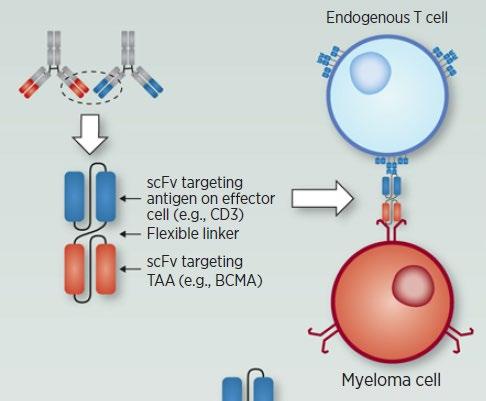

Availability is off-the-shelf, allowing for immediate treatment
Cohen A et al. Clin Cancer Res. 2020;26:1541.
BCMA, GPRC5D, or FcRH5
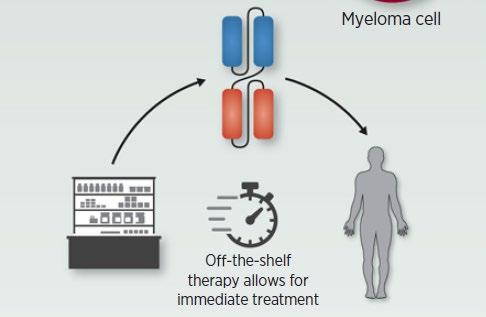

Examples:
• Elranatamab
• Teclistamab
• TNB-303B (ABBV-383)
• REGN5458
• Cevostamab
• Talquetamab
Drug Formulation Approval
Tecvayli (teclistamab)*

Step-up dosing† the first week then once weekly thereafter by subcutaneous injection
• For relapsed/ refractory myeloma (after 4 or more prior lines of therapy, including an IMiD, a PI, and an anti-CD38 mAb)
IMiD, immunomodulatory agent; PI, proteasome inhibitor; mAb, monoclonal antibody
*Black box warning: cytokine release syndrome; neurologic toxicities
†Patients are hospitalized for 48 hours after administration of all step-up doses.
Tecvayli is available only through a restricted distribution program.
Patients (%)
Median duration of response 18.4 months
Teclistamab was well tolerated; discontinuations and dose reductions were infrequent
• 2 patients (1.2%) discontinued due to AEs (grade 3 adenoviral pneumonia; grade 4 PML)
• 1 patient had dose reduction at cycle 21
• The most common AEs were CRS and cytopenias
• Infections occurred in 126 (76.4%) patients (grade 3/4: 44.8%)
• 123 patients (74.5%) had evidence of hypogammaglobulinemiaa
• There were 19 deaths due to AEs, including 12 COVID-19 deaths
• 5 deaths due to teclistamab-related AEs:
• COVID-19 (n=2)
• Pneumonia (n=1)
• Hepatic failure (n=1)


• Median duration of followup was 12.0 mos (range 0.3–32.3)
• ORR = 64% (95% CI, 50–75); CR/sCR rate = 38% (21/55)
• 54% (7/13) of patients with prior BCMA-directed therapy achieved response
• For responders (n = 35), median TTR = 36 days (range 7–262)
Data cutoff 9/30/2022
Swimmer plot depicts disease assessments relevant to first response, confirmation of response, deepening of response, and best response. Mutational analysis was filtered on functional mutations annotated in OncoKB and normal allele frequency <5% in paired peripheral blood mononuclear cell samples. * Prior anti-BCMA ADC. * Prior BCMA-targeted CAR-T.
MR = minimal response; NE = not evaluable; PD = progressive disease; Q2W = every 2 weeks; REL = relapse; SD = stable disease; TTR = time to response.
Raje N, et al. ASH. 2022: abstract 158.

*Calculated from n =106 responders in each group. QW = weekly.
ORR was similar for QW and Q2W schedules
• Triple-class refractory: 72.6% and 71.0%
• Penta-drug refractory: 71.4% and 70.6%
• ORR was consistent across subgroups including baseline ISS stage III disease, baseline cytogenetic risk, number of prior therapies, and belantamab exposure, except among patients with baseline plasmacytomas

CRS
were graded by CTCAE v4.03 with 2–3 step-up doses.
CRS events
• Most CRS events were grade 1/2 and largely confined to step-up doses and first full dose
Non-hematologic AEs
• Low rates of grade 3/4 nonhematologic AEs
• Low discontinuation rates due to AEs Most common AEs were CRS, skinrelated events, nail-related events, and dysgeusia
Hematologic AEs
• Most high-grade AEs were cytopenias
• Cytopenias were generally limited to first few cycles
• Cytokine release syndrome (CRS)
• Neurotoxicity (ICANS)
• Usually occurs within first 1–2 weeks
• Frequency (all grade and grade 3–5) higher with CAR T
• Cytopenias
• Target unique
• For example, rash, taste disturbance seen with GPRC5D, but not with BCMA
• Infections
• Incidence for bispecifics at RP2D not yet known
• Viruses: CMV, EBV
• PCP/PJP
• Ongoing discussions regarding prophylactic measures
IVIG
Anti-infectives
CAR T-cell therapy Bispecific antibody
Approved product
How given One-and-done
Where
Notable
IV or SC, weekly to every 3 weeks until progression
CAR T and bispecific antibodies are very active even in heavily pretreated patients.
Side effects of CAR T cells and bispecific antibodies include cytokine release syndrome, confusion, and low blood counts, all of which are treatable.
Abecma and Carvykti are only the first-generation CAR T cells and target the same protein. Different CAR Ts and different targets are on the way.
Bispecific antibodies represent an “off-the-shelf” immunotherapy; Tecvayli was approved in October 2022, and now Talvey and Elrexfio in August 2023
Several additional bispecific antibodies are under clinical evaluation.
Bortezomib
Lenalidomide
Carfilzomib
Pomalidomide
Panobinostat
Daratumumab
Ixazomib
Elotuzumab
Lenalidomide
Bortezomib
Ixazomib
Lenalidomide + PI
SCT +/- More induction
Carfilzomib
Combinations
Selinexor
Isatuximab
Idecabtagene autoleucel
Ciltacabtagene autoleucel
Teclistamab
Talquetamab
Elranatamab
Isa-VRD Isa-KRD D-KRD
CAR T or Bispecifics?
Daratumumab?
Novel CAR T Cell Therapies
Bispecific/Trispecific Antibodies
CelMod Agents
Venetoclax?
Modakafusp
Multiple small molecules

• Provide the rationale for clinical trials
• Outline the phases of clinical trials
• Discuss the risks and benefits of clinical trials
• Preview important clinical trials in myeloma
Remember some of the important principles of clinical trials:
• The drive of research has brought us to where we are
• No one is expected to be a “guinea pig” with no potential benefit to them
• Research is under very tight supervision and standards
• Open, clear communication between the physician and the patient is fundamental
• Every patient is unique and must be viewed that way
• Benefits of trials are numerous and include:
• Early access to “new” therapy
• Delay use of standard therapy
• Contribution to myeloma world – present and future
• Financial access to certain agents
• Must be balanced with potential risks
• “toxicity” of side effects
• Possibility of lack of efficacy

Identify a target for therapy in the laboratory
Confirm the anticancer activity in laboratory and animal studies
Clinical trials (human studies) to determine safety, dosing and effectiveness
The whole process costs millions of dollars and years of effort!

Tests safety Tests how well treatment works Compares new treatment to standard treatment
• Be unaware of clinical trials
• Lack access to trials
• Fear, distrust, or be suspicious of research
• Have practical or personal obstacles
• Face insurance or cost problems
• Be unwilling to go against their physicians’ wishes
• Not have physicians who offer them trials
• Have a disconnect with their healthcare team
• There has been a lack of diverse representation in clinical trials in myeloma. In the U.S., approximately 20% of all myeloma patients are of African descent, but only 5%–8% of patients in myeloma clinical trials are of African descent.
• This is significant for the following reasons: All patients of all races and ethnicities should be able to benefit from clinical trials. Diverse patient representation in clinical trials is required to ensure that the outcomes are applicable to all patients.
• Reasons for underrepresentation in clinical trials are complex and include systemic racism, accessibility of clinical trials, sensitivity to diversity by medical professionals, misconduct in medicine in the past, the lack of trust in the system, and more.
How does the study work? How often will I need to see my doctor or visit the cancer center?
Will I need to undergo additional tests?
What is currently known about the new drug or combination?


What benefits can I expect?
What side effects should I expect? Who should I notify if I have side effects?


Can I take my vitamins or other medications?
Can I get the treatment with my local doctor?
Will my insurance pay for my participation in the clinical trial?




• Discuss whether or not you are eligible for a clinical trial with your physician
• Work with your physician to determine the best trial for you
• Meet with the clinical research nurse or trials coordinator to discuss the trial
• Carefully review the provided “Informed Consent”
• Describes the study and any potential safety concerns related to the experimental medication


• SO many areas being studied right now including…
• CAR T Cell therapy (used earlier in myeloma, new targets, faster manufacturing, even allo CAR T!)
• Novel Bispecific Therapies (with new targets) and even Trispecifics
• New molecules – CelMods, …
And MANY more!


Patient and Family Seminars
Minneapolis – July 18th & 19th, 2024 – JW Marriott
Mall of America

Los Angeles – August 16th & 17th, 2024 – Hilton Los
Angeles/Universal City
Regional Community Workshops
June 22, 2024 – Charlotte RCW – Hyatt Southpark
Charlotte
At the close of the meeting a feedback survey will pop up.
This will also be emailed to you shortly after the workshop.

Please take a moment to complete this survey.


Thank you to our sponsors!









Thank you for attending today’s program!
May 21, 2024, International Myeloma Foundation’s
Regional Community Workshop